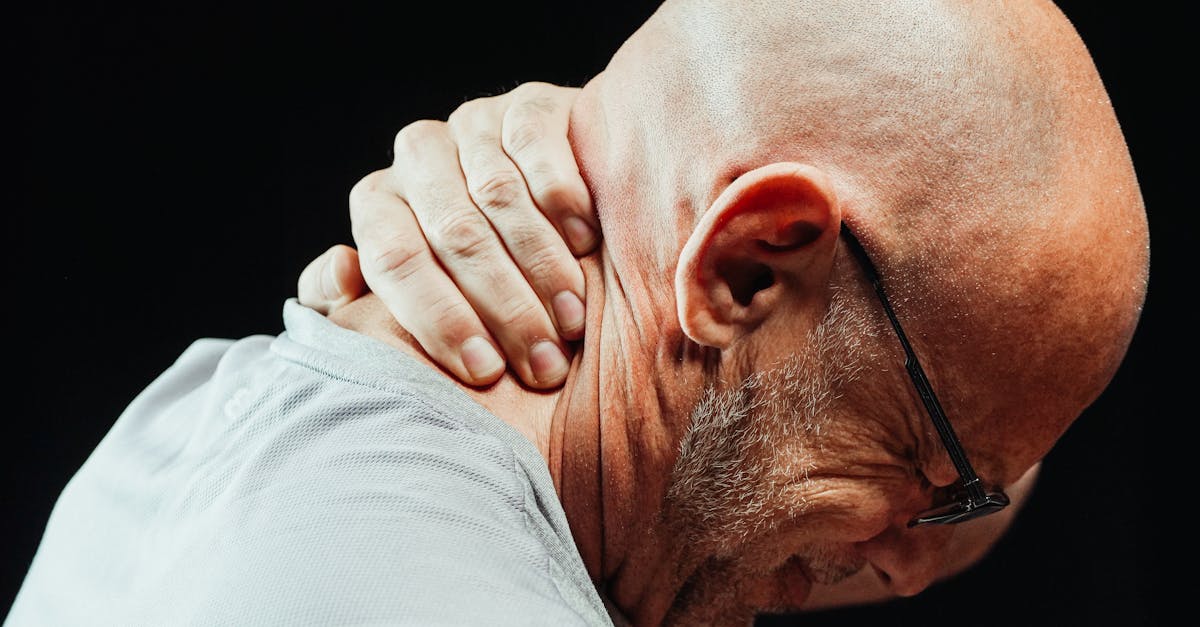Are migraine trigger foods causing you pain and discomfort?
Simply put, migraine trigger foods can disrupt your daily routine and increase the painful migraine and associated headaches. Recognizing these triggers is essential to reducing the frequency and severity of your migraines . By adopting a targeted migraine food and incorporating natural headache remedies, you can improve your overall well-being. Discover how adjusting your diet can help alleviate painful migraines and enhance your quality of life. Take back your health and well-being at our Pulse Align clinics. Book an appointment today! Do you struggle with chronic headaches and migraine trigger foods? Migraine trigger foods can turn your days into a real headache. By being aware of the links between your diet and migraine pain, you can potentially find a path to migraine relief and improve your overall well-being. Targeted dietary adjustments combined with natural headache remedies can reduce not only the frequency but also the intensity of these ailments. Recognizing dietary migraine triggers, such as certain aged cheeses or alcohol, can help you make informed choices to prevent this debilitating pain. Pulse Align offers solutions tailored to your needs, combining nutrition and posture correction for lasting well-being. Discover the main migraine triggers and learn how to identify them to better manage your attacks. Our practical tips will help you reduce the frequency and intensity of your migraines.
Migraine Trigger Awareness: Towards Optimal Well-Being with Pulse Align
The connection between our diet and our overall well-being is often underestimated. Migraine-triggering foods can directly impact our sense of comfort. Through improved posture and an innovative approach, Pulse Align aims to stimulate our body’s natural healing processes while emphasizing neuromuscular readjustment. Discover the Pulse Align Approach What makes Pulse Align unique? By using gentle stimulation techniques, this method helps restore the body’s natural balance. The focus is on symmetrical muscle tone, an essential aspect for promoting overall well-being. Instead of directly treating symptoms, Pulse Align promotes a transformative process that can positively impact your daily experience. The Benefits of a Holistic Approach Adopting a holistic methodology like Pulse Align allows you to benefit from the body’s innate ability to heal itself. By aligning your posture, you may notice a significant reduction in discomforts such as neck tension. Clients who have experienced this approach often report a natural improvement in their well-being, increasing their mobility and vitality in their daily lives. Testimonials from Satisfied Clients Many Pulse Align clients in La Prairie and Mont-Royal have seen their lives improve not only in terms of comfort, but also by increasing their flexibility and reducing discomfort. “Since I started using Pulse Align, my posture has improved and the tension I felt in my neck has decreased. I feel more energetic and balanced every day!” they say. These testimonials illustrate how Pulse Align can have an unprecedented impact on quality of life. Take the First Step Toward Your Well-Being Migraine Trigger Foods: Awareness and Link to Pulse Align Caffeine – Can relieve, but can also worsen migraines. Alcohol – Especially red wine and beer, which are known to dehydrate. Dairy
Nitrates
– Found in processed meats, can dilate blood vessels. Citrus Fruits – Can cause inflammatory reactions. Artificial Sweeteners – Such as aspartame, which can be harmful to the nervous system. Tyramine-Rich Foods – Includes aged and fermented meats.
Onions
– Used in many cooked dishes, can trigger headaches. Nuts and legumes– Like peanuts and almonds, they can be problematic. Gluten – Can cause headaches in sensitive individuals. MSG
– Used in many processed foods to enhance flavor.
Discover the main migraine triggers and how to identify them to better manage them. Learn effective strategies to reduce the frequency and intensity of your migraines on a daily basis. Migraines can cause severe pain as well as symptoms such as headache nausea and other disabling qualities. Understanding the link between migraine trigger foods and their impact on your health is essential for achieving migraine relief. This article examines how a holistic approach to food choices and neuromuscular health practices can contribute to the prevention and management of migraines. Identify Trigger Foods Certain foods can intensify migraine pain. Triggers such as dairy products, alcohol, especially red wine, and processed meats are often cited. Identifying these foods is crucial for limiting the impact of chronic migraines. By keeping a food journal, you can discern patterns around your migraine attacks, linking your nutrition to headache frequency. Importance of a Balanced Diet Optimizing your diet is essential for reducing the risk of migraines. A balanced intake of fruits, vegetables, and whole grains helps maintain stable blood sugar levels, preventing low blood sugar levels that can trigger headaches. Additionally, incorporating essential oils for headache relief can be beneficial by providing natural relief. Strengthening and Postural Correction Exercises Beyond nutrition, posture correction plays a fundamental role in managing migraine pain. Core exercises, such as Pilates, can help improve posture and reduce tension. Similarly, targeted exercises for hyperlordosis can optimize spinal support, limiting the frequency of tension headaches.
Complementary Therapies
Holistic thinking recommends approaches that combine Natural remedies for headaches and core-strengthening practices. Consulting a professional to explore techniques such as shockwave therapy or neuromuscular recalibration can provide additional support for conditions such as migraines with aura or menstrual migraines. Join the Pulse Align Community If you are looking for personalized strategies to manage your migraines and want to explore the effects of your diet on your health, consider booking an appointment with Pulse Align. Our clinics, available in locations such as Montreal and La Prairie, offer integrative support to help you navigate your path to better health. By adopting practices that promote symmetry and realignment, you can restore balance and improve your quality of life.
Don’t let migraines limit your well-being! Book an appointment today to discover how we can support you on your journey to wellness. Trigger Foods
Impact on Migraines Caffeine Can reduce pain if consumed in moderation, but excess can induce migraines. Alcohol Particularly red wine, which can dehydrate and cause imbalances. Dairy Products such as aged cheese can cause inflammation in some individuals. Nitrates Can cause dilation of blood vessels, leading to pain. Citrus Fruits Inflammatory reactions can sometimes be triggered with their consumption. Artificial Sweeteners Like aspartame, they can influence neurological function. Tyramine-Rich Foods Fermented products and aged meats can cause vascular changes. Onions Can cause migraines in people sensitive to sulfur compounds. Nuts and Legumes The histamine content can induce migraines in some consumers. Gluten May cause migraines in susceptible individuals or those with celiac disease. Discover common migraine triggers and learn how to identify them to better manage your attacks. Improve your quality of life by eliminating aggravating factors and adopting effective preventive strategies. Client Improvements on Their Wellness Journey Pulse Align clients have experienced a true transformation in their migraine management thanks to our innovative approach. In La Prairie, many report observing natural improvements by identifying trigger foods associated with their condition. These experiences have allowed our clients to regain precious balance and restore their health without systematically resorting to conventional medical treatments.
In regions like Mount Royal and Terrebonne, testimonials are pouring in. One client commented, “I was always tired because of my migraines, but since discovering Pulse Align, I’ve learned to manage my diet.” I avoided trigger foods like aged cheese and red wine, as eliminating them made a huge difference for me.” This holistic approach has allowed many to experience symptom relief and a better quality of life.
Clients in
Chicoutimi have also emphasized the importance of thesense of well-being that results from our method. One client said, “By learning which actions can trigger my pain, I regained control of my body. I feel lighter and more energetic in my daily life.” Thanks to this awareness, they are now able to make informed choices for their health.Châteauguay , several clients have found a community of support by visiting Pulse Align. Their journey to better health has not only reduced their migraines, but also created meaningful connections with others going through similar challenges.We firmly believe that raising awareness about trigger foods is the key to empowerment. In Saint-Jérôme, one participant noted, “I was able to avoid foods like citrus fruits and cooking techniques that made me sick. It felt so good. The support from Pulse Align has been invaluable in my quest for wellness.” Feel free to explore our services and learn how we partner with healthcare teams to support our clients and their families on their wellness journey. To connect with us and find our clinics in cities like Deux-Montagnes, Sainte-Marie, and others, visit our website, which details our holistic approach. Together, we can restore your balance and promote your well-being.Understanding Migraine Triggers Are migraine trigger foods causing pain and discomfort in your life? Understanding the link between your diet and migraine pain is essential to seeking effective relief. By identifying specific migraine triggers, such as certain foods, you can significantly reduce the frequency and severity of your headaches. With targeted dietary adjustments and natural headache remedies, you can improve your overall well-being.Migraines aren’t just headaches; they can involve debilitating symptoms like nausea and tension headaches, disrupting daily life. Identifying migraine triggers is crucial, and understanding how certain foods can impact migraine pain opens the door to potential relief. Foods to AvoidMany people report specific foods that trigger their migraines, including, but not limited to: alcohol(particularly red wine and beer), aged cheese, and processed meats. Avoiding these triggers can help you make informed dietary decisions. A food journal can be a valuable tool for recording patterns and identifying specific foods that disrupt your well-being. The Impact of Nutrition on Chronic MigrainesOur Mission At Pulse Align, our mission is to provide patient-centered, evidence-based treatments to address the underlying causes of pain and dysfunction. By integrating advanced techniques and technologies, we strive to empower each individual to take control of their health, ensuring high-quality care, lasting relief, and an improved quality of life. We invite you to explore our approach and available services at www.pulsealign.com and find a location near you here: https://pulsealign.com/our-locations/
TAGMED offers a non-surgical solution specifically designed to treat moderate to severe disc problems. Through a gentle approach that reduces pressure on affected discs and nerves, this specialized technique helps improve mobility, alleviate pain, and support your body’s natural healing process. If you’ve reached a plateau with other therapies, discover how TAGMED’s evidence-based decompression therapy can help you return to an active and comfortable life.
Have you tried conventional treatments and continue to struggle with persistent back pain due to a severe disc condition? Mechanism of Action TAGMED spinal decompression applies gradual, controlled traction to the spine. This method increases the space between the vertebrae, reducing pressure on the intervertebral discs and nerve roots, and promoting better fluid circulation in the targeted area. This process helps reduce inflammation and relieve pain, providing a reliable, non-invasive solution for individuals suffering from chronic pain. Specific Benefits This non-invasive approach can effectively relieve chronic pain and symptoms associated with conditions such as herniated discs or spinal stenosis. By reducing pressure on nerve structures and optimizing fluid circulation around the discs, this treatment can accelerate recovery and improve the quality of life of patients seeking relief. Comparison with Other Treatments Compared to commonly used treatments such as pain medications, corticosteroid injections, surgery, or traditional physical therapy, TAGMED’s spinal decompression technology offers distinct advantages. It involves no invasive procedures, minimizes medication-related risks, and offers a potentially faster path to recovery. It is an attractive choice for those seeking safer, evidence-based alternatives. Testimonials or Case Studies Many patients who have benefited from TAGMED spinal decompression for chronic pain have reported positive experiences. Testimonials report lasting pain relief, a faster return to daily activities, and reduced reliance on medication. These real-life stories highlight the tangible results and practical benefits of this treatment approach. Conclusion: Migraine Trigger Foods and Their Connection to Pulse Align
In the quest to increase awareness of migraine trigger foods, it’s essential to understand their impact on your well-being. Elements such as caffeine, alcohol, dairy products, and foods high in tyramine are frequently linked to the onset of headaches. Recognizing these triggers can be a first step toward effectively managing your health.
With Pulse Align, you’ll enjoy several benefits such as improved posture, reduced discomfort, increased mobility, and overall well-being. These non-invasive services promote natural recovery, allowing your body to function optimally while supporting its self-healing abilities. The positive experiences reported by Pulse Align clients reinforce the importance of a mind-centered approach. Clientele. Many individuals testify to the significant impact Pulse Align’s gentle methods have on their daily lives, noting a notable improvement in their quality of life. We encourage you to discover the Pulse Align difference today. To begin your journey to greater well-being, visit our website or schedule your consultation at one of our clinics. Take control of your health and embark on a path to natural, holistic balance. The future of your well-being is bright, and every small step toward health and well-being will bring you closer to your goal of a more fulfilling and balanced life. Discover the main migraine triggers and learn how to identify them to better manage your painful episodes. Learn about dietary habits, stress, hormonal fluctuations, and other factors that can intensify your migraines. Protect your well-being by understanding these key elements. Do you suffer from a chronic condition that responds little or not at all to conservative treatments? At Pulse Align, we are dedicated to offering an innovative and non-invasive method that helps restore the body’s natural balance and posture through gentle, imperceptible impulses. This gentle process can lead to a reduction in tension in muscles and joints while addressing issues in a natural way. By integrating solutions that harmonize with the body’s natural processes, we believe this approach can provide real relief from common discomforts. It’s essential to understand that at Pulse Align, we don’t directly focus on discomforts or conditions, but work to help the body naturally recalibrate itself. This process often leads to remarkable improvements in self-confidence, comfort, and posture.Our clients often find that by allowing their body to adjust to its needs, they experience increased well-being on a daily basis. Our personalized approach is what sets us apart. Many clients share their transformative experiences with us, expressing reduced tension in their neck and back, as well as invaluable improvements across various aspects of their well-being. By sharing their stories, they attest to how they feel more comfortable and balanced in their daily lives, reinforcing our commitment to equality in overall health.
We invite you to explore more of our services on our website, where you can also find locations near you, including La Prairie, Mont-Royal, Terrebonne, and more. At Pulse Align, we are here to help you or your family by providing an approach that complements standard health services. Book your online consultation now to discover how we can be part of your journey to renewed well-being. For more information, visit our website:
Pulse Align .
Frequently Asked Questions
Headache and Migraine
Do certain foods trigger migraines?
Some foods (chocolate, aged cheese, alcohol, MSG) can trigger attacks in predisposed individuals.
Does dehydration cause headaches?
Yes, inadequate hydration can trigger headaches and worsen migraines.
Does cognitive-behavioral therapy help?
Yes, it teaches stress and pain management techniques, reducing migraine frequency and intensity.
Are blue-light filtering screens useful?
They reduce eye strain, potentially lowering headache risk.
Do blood sugar fluctuations trigger migraines?
Hypoglycemia can trigger migraines in some individuals.
Does bright light trigger migraines?
Yes, light sensitivity is common, and bright light can worsen a migraine attack.
Do children get migraines?
Yes, children can experience migraines, often shorter but just as painful.
Are anti-inflammatories effective for migraines?
They can relieve mild to moderate attacks, but severe migraines often need specific treatments.
Do migraine medications cause dependence?
Not typically, but frequent use of analgesics can lead to rebound headaches.
Does noise trigger migraines?
Yes, hypersensitivity to sound is common, and loud noises can worsen the pain.
References No parsed citations found. Full shortcode output:
722490
MDAVM6MK
1
apa
20
default
9083
https://pulsealignchateauguay.com/wp-content/plugins/zotpress/
%7B%22status%22%3A%22success%22%2C%22updateneeded%22%3Afalse%2C%22instance%22%3Afalse%2C%22meta%22%3A%7B%22request_last%22%3A0%2C%22request_next%22%3A0%2C%22used_cache%22%3Atrue%7D%2C%22data%22%3A%5B%7B%22key%22%3A%22474E5C2I%22%2C%22library%22%3A%7B%22id%22%3A722490%7D%2C%22meta%22%3A%7B%22creatorSummary%22%3A%22Al-Khazali%20et%20al.%22%2C%22parsedDate%22%3A%222024%22%2C%22numChildren%22%3A1%7D%2C%22bib%22%3A%22%26lt%3Bdiv%20class%3D%26quot%3Bcsl-bib-body%26quot%3B%20style%3D%26quot%3Bline-height%3A%202%3B%20padding-left%3A%201em%3B%20text-indent%3A-1em%3B%26quot%3B%26gt%3B%5Cn%20%20%26lt%3Bdiv%20class%3D%26quot%3Bcsl-entry%26quot%3B%26gt%3BAl-Khazali%2C%20H.%20M.%2C%20Al-Sayegh%2C%20Z.%2C%20Younis%2C%20S.%2C%20Christensen%2C%20R.%20H.%2C%20Ashina%2C%20M.%2C%20Schytz%2C%20H.%20W.%2C%20%26amp%3B%20Ashina%2C%20S.%20%282024%29.%20Systematic%20review%20and%20meta-analysis%20of%20Neck%20Disability%20Index%20and%20Numeric%20Pain%20Rating%20Scale%20in%20patients%20with%20migraine%20and%20tension-type%20headache.%20%26lt%3Bi%26gt%3BCephalalgia%26lt%3B%5C%2Fi%26gt%3B%2C%20%26lt%3Bi%26gt%3B44%26lt%3B%5C%2Fi%26gt%3B%288%29%2C%2003331024241274266.%20%26lt%3Ba%20class%3D%26%23039%3Bzp-DOIURL%26%23039%3B%20href%3D%26%23039%3Bhttps%3A%5C%2F%5C%2Fdoi.org%5C%2F10.1177%5C%2F03331024241274266%26%23039%3B%26gt%3Bhttps%3A%5C%2F%5C%2Fdoi.org%5C%2F10.1177%5C%2F03331024241274266%26lt%3B%5C%2Fa%26gt%3B%26lt%3B%5C%2Fdiv%26gt%3B%5Cn%26lt%3B%5C%2Fdiv%26gt%3B%22%2C%22data%22%3A%7B%22itemType%22%3A%22journalArticle%22%2C%22title%22%3A%22Systematic%20review%20and%20meta-analysis%20of%20Neck%20Disability%20Index%20and%20Numeric%20Pain%20Rating%20Scale%20in%20patients%20with%20migraine%20and%20tension-type%20headache%22%2C%22creators%22%3A%5B%7B%22creatorType%22%3A%22author%22%2C%22firstName%22%3A%22Haidar%20M.%22%2C%22lastName%22%3A%22Al-Khazali%22%7D%2C%7B%22creatorType%22%3A%22author%22%2C%22firstName%22%3A%22Zainab%22%2C%22lastName%22%3A%22Al-Sayegh%22%7D%2C%7B%22creatorType%22%3A%22author%22%2C%22firstName%22%3A%22Samaira%22%2C%22lastName%22%3A%22Younis%22%7D%2C%7B%22creatorType%22%3A%22author%22%2C%22firstName%22%3A%22Rune%20H.%22%2C%22lastName%22%3A%22Christensen%22%7D%2C%7B%22creatorType%22%3A%22author%22%2C%22firstName%22%3A%22Messoud%22%2C%22lastName%22%3A%22Ashina%22%7D%2C%7B%22creatorType%22%3A%22author%22%2C%22firstName%22%3A%22Henrik%20W.%22%2C%22lastName%22%3A%22Schytz%22%7D%2C%7B%22creatorType%22%3A%22author%22%2C%22firstName%22%3A%22Sait%22%2C%22lastName%22%3A%22Ashina%22%7D%5D%2C%22abstractNote%22%3A%22Background%5Cn%20%20%20%20%20%20%20%20%20%20%20%20%20%20The%20present%20study%20aimed%20to%20assess%20the%20burden%20of%20neck%20pain%20in%20adults%20with%20migraine%20and%20tension-type%20headache%20%28TTH%29%2C%20utilizing%20the%20Neck%20Disability%20Index%20%28NDI%29%20and%20Numeric%20Pain%20Rating%20Scale%20%28NPRS%29.%5Cn%20%20%20%20%20%20%20%20%20%20%20%20%5Cn%20%20%20%20%20%20%20%20%20%20%20%20%5Cn%20%20%20%20%20%20%20%20%20%20%20%20%20%20Methods%5Cn%20%20%20%20%20%20%20%20%20%20%20%20%20%20%5Cn%20%20%20%20%20%20%20%20%20%20%20%20%20%20%20%20A%20systematic%20literature%20search%20was%20conducted%20on%20PubMed%20and%20Embase%20to%20identify%20observational%20studies%20assessing%20NDI%20and%20NPRS%20in%20populations%20with%20migraine%20or%20TTH.%20The%20screening%20of%20articles%20was%20independently%20performed%20by%20two%20investigators%20%28HMA%20and%20ZA%29.%20Pooled%20mean%20estimates%20were%20calculated%20through%20random-effects%20meta-analysis.%20The%20I%5Cn%20%20%20%20%20%20%20%20%20%20%20%20%20%20%20%202%5Cn%20%20%20%20%20%20%20%20%20%20%20%20%20%20%20%20statistic%20assessed%20between-study%20heterogeneity%2C%20and%20meta-regression%20further%20explored%20heterogeneity%20factors.%5Cn%20%20%20%20%20%20%20%20%20%20%20%20%20%20%5Cn%20%20%20%20%20%20%20%20%20%20%20%20%5Cn%20%20%20%20%20%20%20%20%20%20%20%20%5Cn%20%20%20%20%20%20%20%20%20%20%20%20%20%20Results%5Cn%20%20%20%20%20%20%20%20%20%20%20%20%20%20%5Cn%20%20%20%20%20%20%20%20%20%20%20%20%20%20%20%20Thirty-three%20clinic-based%20studies%20met%20the%20inclusion%20criteria.%20For%20participants%20with%20migraine%2C%20the%20pooled%20mean%20NDI%20score%20was%2016.2%20%2895%25%20confidence%20interval%20%28CI%29%20%3D%2013.2%5Cu201319.2%2C%20I%5Cn%20%20%20%20%20%20%20%20%20%20%20%20%20%20%20%202%5Cu2009%5Cn%20%20%20%20%20%20%20%20%20%20%20%20%20%20%20%20%3D%5Cu200999%25%29.%20Additionally%2C%20the%20mean%20NDI%20was%205.5%20%2895%25%20CI%20%3D%204.11%5Cu20136.8%2C%20p%5Cu2009%26lt%3B%5Cu20090.001%29%20scores%20higher%20in%20participants%20with%20chronic%20compared%20to%20episodic%20migraine.%20The%20pooled%20mean%20NDI%20score%20for%20participants%20with%20TTH%20was%2013.7%20%2895%25%20CI%20%3D%204.9%5Cu201322.4%2C%20I%5Cn%20%20%20%20%20%20%20%20%20%20%20%20%20%20%20%202%5Cu2009%5Cn%20%20%20%20%20%20%20%20%20%20%20%20%20%20%20%20%3D%5Cu200999%25%29.%20In%20addition%2C%20the%20meta-analysis%20revealed%20a%20mean%20NPRS%20score%20of%205.7%20%2895%25%20CI%20%3D%205.1%5Cu20136.2%2C%20I%5Cn%20%20%20%20%20%20%20%20%20%20%20%20%20%20%20%202%5Cn%20%20%20%20%20%20%20%20%20%20%20%20%20%20%20%20%5Cu2009%3D%5Cu200995%25%29%20across%20all%20participants%20with%20migraine.%5Cn%20%20%20%20%20%20%20%20%20%20%20%20%20%20%5Cn%20%20%20%20%20%20%20%20%20%20%20%20%5Cn%20%20%20%20%20%20%20%20%20%20%20%20%5Cn%20%20%20%20%20%20%20%20%20%20%20%20%20%20Conclusions%5Cn%20%20%20%20%20%20%20%20%20%20%20%20%20%20This%20systematic%20review%20and%20meta-analysis%20shows%20a%20greater%20degree%20of%20neck%20pain-related%20disability%20in%20migraine%20compared%20to%20TTH.%20Nevertheless%2C%20the%20generalizability%20of%20these%20findings%20is%20constrained%20by%20methodological%20variations%20identified%20in%20the%20current%20literature.%22%2C%22date%22%3A%2208%5C%2F2024%22%2C%22language%22%3A%22en%22%2C%22DOI%22%3A%2210.1177%5C%2F03331024241274266%22%2C%22ISSN%22%3A%220333-1024%2C%201468-2982%22%2C%22url%22%3A%22https%3A%5C%2F%5C%2Fjournals.sagepub.com%5C%2Fdoi%5C%2F10.1177%5C%2F03331024241274266%22%2C%22collections%22%3A%5B%22MDAVM6MK%22%5D%2C%22dateModified%22%3A%222024-12-16T17%3A38%3A46Z%22%7D%7D%2C%7B%22key%22%3A%22UL3PWZM8%22%2C%22library%22%3A%7B%22id%22%3A722490%7D%2C%22meta%22%3A%7B%22creatorSummary%22%3A%22Fern%5Cu00e1ndez%5Cu2010de%5Cu2010las%5Cu2010Pe%5Cu00f1as%20et%20al.%22%2C%22parsedDate%22%3A%222007%22%2C%22numChildren%22%3A1%7D%2C%22bib%22%3A%22%26lt%3Bdiv%20class%3D%26quot%3Bcsl-bib-body%26quot%3B%20style%3D%26quot%3Bline-height%3A%202%3B%20padding-left%3A%201em%3B%20text-indent%3A-1em%3B%26quot%3B%26gt%3B%5Cn%20%20%26lt%3Bdiv%20class%3D%26quot%3Bcsl-entry%26quot%3B%26gt%3BFern%26%23xE1%3Bndez%26%23x2010%3Bde%26%23x2010%3Blas%26%23x2010%3BPe%26%23xF1%3Bas%2C%20C.%2C%20Cuadrado%2C%20M.%20L.%2C%20%26amp%3B%20Pareja%2C%20J.%20A.%20%282007%29.%20Myofascial%20Trigger%20Points%2C%20Neck%20Mobility%2C%20and%20Forward%20Head%20Posture%20in%20Episodic%20Tension%26%23x2010%3BType%20Headache.%20%26lt%3Bi%26gt%3BHeadache%3A%20The%20Journal%20of%20Head%20and%20Face%20Pain%26lt%3B%5C%2Fi%26gt%3B%2C%20%26lt%3Bi%26gt%3B47%26lt%3B%5C%2Fi%26gt%3B%285%29%2C%20662%26%23x2013%3B672.%20%26lt%3Ba%20class%3D%26%23039%3Bzp-DOIURL%26%23039%3B%20href%3D%26%23039%3Bhttps%3A%5C%2F%5C%2Fdoi.org%5C%2F10.1111%5C%2Fj.1526-4610.2006.00632.x%26%23039%3B%26gt%3Bhttps%3A%5C%2F%5C%2Fdoi.org%5C%2F10.1111%5C%2Fj.1526-4610.2006.00632.x%26lt%3B%5C%2Fa%26gt%3B%26lt%3B%5C%2Fdiv%26gt%3B%5Cn%26lt%3B%5C%2Fdiv%26gt%3B%22%2C%22data%22%3A%7B%22itemType%22%3A%22journalArticle%22%2C%22title%22%3A%22Myofascial%20Trigger%20Points%2C%20Neck%20Mobility%2C%20and%20Forward%20Head%20Posture%20in%20Episodic%20Tension%5Cu2010Type%20Headache%22%2C%22creators%22%3A%5B%7B%22creatorType%22%3A%22author%22%2C%22firstName%22%3A%22C%5Cu00e9sar%22%2C%22lastName%22%3A%22Fern%5Cu00e1ndez%5Cu2010de%5Cu2010las%5Cu2010Pe%5Cu00f1as%22%7D%2C%7B%22creatorType%22%3A%22author%22%2C%22firstName%22%3A%22Maria%20L.%22%2C%22lastName%22%3A%22Cuadrado%22%7D%2C%7B%22creatorType%22%3A%22author%22%2C%22firstName%22%3A%22Juan%20A.%22%2C%22lastName%22%3A%22Pareja%22%7D%5D%2C%22abstractNote%22%3A%22Objective.%5Cu2014To%20assess%20the%20differences%20in%20the%20presence%20of%20trigger%20points%20%28TrPs%29%20in%20head%20and%20neck%20muscles%2C%20forward%20head%20posture%20%28FHP%29%20and%20neck%20mobility%20between%20episodic%20tension%5Cu2010type%20headache%20%28ETTH%29%20subjects%20and%20healthy%20controls.%20In%20addition%2C%20we%20assess%20the%20relationship%20between%20these%20muscle%20TrPs%2C%20FHP%2C%20neck%20mobility%2C%20and%20several%20clinical%20variables%20concerning%20the%20intensity%20and%20the%20temporal%20profile%20of%20headache.%5Cn%20%20%20%20%20%20%20%20%20%20%20%20Background.%5Cu2014TTH%20is%20a%20headache%20in%20which%20musculoskeletal%20disorders%20of%20the%20craniocervical%20region%20might%20play%20an%20important%20role%20in%20its%20pathogenesis.%5Cn%20%20%20%20%20%20%20%20%20%20%20%20Design.%5Cu2014A%20blinded%2C%20controlled%20pilot%20study.%5Cn%20%20%20%20%20%20%20%20%20%20%20%20Methods.%5Cu2014Fifteen%20ETTH%20subjects%20and%2015%20matched%20controls%20without%20headache%20were%20studied.%20TrPs%20in%20both%20upper%20trapezius%2C%20both%20sternocleidomastoids%2C%20and%20both%20temporalis%20muscles%20were%20identified%20according%20to%20Simons%20and%20Gerwin%20diagnostic%20criteria%20%28tenderness%20in%20a%20hypersensible%20spot%20within%20a%20palpable%20taut%20band%2C%20local%20twitch%20response%20elicited%20by%20snapping%20palpation%2C%20and%20elicited%20referred%20pain%20with%20palpation%29.%20Side%5Cu2010view%20pictures%20of%20each%20subject%20were%20taken%20in%20both%20sitting%20and%20standing%20positions%2C%20in%20order%20to%20assess%20FHP%20by%20measuring%20the%20craniovertebral%20angle.%20A%20cervical%20goniometer%20was%20employed%20to%20measure%20neck%20mobility.%20All%20measures%20were%20taken%20by%20a%20blinded%20assessor.%20A%20headache%20diary%20was%20kept%20for%204%20weeks%20in%20order%20to%20assess%20headache%20intensity%2C%20frequency%2C%20and%20duration.%5Cn%20%20%20%20%20%20%20%20%20%20%20%20%5Cn%20%20%20%20%20%20%20%20%20%20%20%20%20%20Results.%5Cu2014The%20mean%20number%20of%20TrPs%20for%20each%20ETTH%20subject%20was%203.7%20%28SD%3A%201.3%29%2C%20of%20which%201.9%20%28SD%3A%200.9%29%20were%20active%2C%20and%201.8%20%28SD%3A%200.9%29%20were%20latent.%20Control%20subjects%20only%20had%20latent%20TrPs%20%28mean%3A%201.5%3B%20SD%3A%201%29.%20TrP%20occurrence%20between%20the%202%20groups%20was%20significantly%20different%20for%20active%20TrPs%20%28%5Cn%20%20%20%20%20%20%20%20%20%20%20%20%20%20P%5Cn%20%20%20%20%20%20%20%20%20%20%20%20%20%20%26lt%3B%20.001%29%2C%20but%20not%20for%20latent%20TrPs%20%28%5Cn%20%20%20%20%20%20%20%20%20%20%20%20%20%20P%5Cn%20%20%20%20%20%20%20%20%20%20%20%20%20%20%26gt%3B%20.05%29.%20Differences%20in%20the%20distribution%20of%20TrPs%20were%20significant%20for%20the%20right%20upper%20trapezius%20muscles%20%28%5Cn%20%20%20%20%20%20%20%20%20%20%20%20%20%20P%5Cn%20%20%20%20%20%20%20%20%20%20%20%20%20%20%3D%20.04%29%2C%20the%20left%20sternocleidomastoid%20%28%5Cn%20%20%20%20%20%20%20%20%20%20%20%20%20%20P%5Cn%20%20%20%20%20%20%20%20%20%20%20%20%20%20%3D%20.03%29%2C%20and%20both%20temporalis%20muscles%20%28%5Cn%20%20%20%20%20%20%20%20%20%20%20%20%20%20P%5Cn%20%20%20%20%20%20%20%20%20%20%20%20%20%20%26lt%3B%20.001%29.%20Within%20the%20ETTH%20group%2C%20headache%20intensity%2C%20frequency%2C%20and%20duration%20outcomes%20did%20not%20differ%20depending%20on%20TrP%20activity%2C%20whether%20the%20TrP%20was%20active%20or%20latent.%20The%20craniovertebral%20angle%20was%20smaller%2C%20ie%2C%20there%20was%20a%20greater%20FHP%2C%20in%20ETTH%20patients%20than%20in%20healthy%20controls%20for%20both%20sitting%20and%20standing%20positions%20%28%5Cn%20%20%20%20%20%20%20%20%20%20%20%20%20%20P%5Cn%20%20%20%20%20%20%20%20%20%20%20%20%20%20%26lt%3B%20.05%29.%20ETTH%20subjects%20with%20active%20TrPs%20in%20the%20analyzed%20muscles%20had%20a%20greater%20FHP%20than%20those%20with%20latent%20TrPs%20in%20both%20sitting%20and%20standing%20positions%2C%20though%20differences%20were%20only%20significant%20for%20certain%20muscles.%20Finally%2C%20ETTH%20patients%20also%20showed%20lesser%20neck%20mobility%20than%20healthy%20controls%20in%20the%20total%20range%20of%20motion%20as%20well%20as%20in%20half%5Cu2010cycles%20%28except%20for%20cervical%20extension%29%2C%20although%20neck%20mobility%20did%20not%20seem%20to%20influence%20headache%20parameters.%5Cn%20%20%20%20%20%20%20%20%20%20%20%20%5Cn%20%20%20%20%20%20%20%20%20%20%20%20Conclusions.%5Cu2014Active%20TrPs%20in%20the%20upper%20trapezius%2C%20sternocleidomastoid%2C%20and%20temporalis%20muscles%20were%20more%20common%20in%20ETTH%20subjects%20than%20in%20healthy%20controls%2C%20although%20TrP%20activity%20was%20not%20related%20to%20any%20clinical%20variable%20concerning%20the%20intensity%20and%20the%20temporal%20profile%20of%20headache.%20ETTH%20patients%20showed%20greater%20FHP%20and%20lesser%20neck%20mobility%20than%20healthy%20controls%2C%20although%20both%20disorders%20were%20not%20correlated%20with%20headache%20parameters.%22%2C%22date%22%3A%2205%5C%2F2007%22%2C%22language%22%3A%22en%22%2C%22DOI%22%3A%2210.1111%5C%2Fj.1526-4610.2006.00632.x%22%2C%22ISSN%22%3A%220017-8748%2C%201526-4610%22%2C%22url%22%3A%22https%3A%5C%2F%5C%2Fheadachejournal.onlinelibrary.wiley.com%5C%2Fdoi%5C%2F10.1111%5C%2Fj.1526-4610.2006.00632.x%22%2C%22collections%22%3A%5B%22MDAVM6MK%22%5D%2C%22dateModified%22%3A%222024-12-16T17%3A38%3A46Z%22%7D%7D%2C%7B%22key%22%3A%22Q6L4ZIPK%22%2C%22library%22%3A%7B%22id%22%3A722490%7D%2C%22meta%22%3A%7B%22creatorSummary%22%3A%22Bjarne%22%2C%22parsedDate%22%3A%222024%22%2C%22numChildren%22%3A1%7D%2C%22bib%22%3A%22%26lt%3Bdiv%20class%3D%26quot%3Bcsl-bib-body%26quot%3B%20style%3D%26quot%3Bline-height%3A%202%3B%20padding-left%3A%201em%3B%20text-indent%3A-1em%3B%26quot%3B%26gt%3B%5Cn%20%20%26lt%3Bdiv%20class%3D%26quot%3Bcsl-entry%26quot%3B%26gt%3BBjarne%2C%20B.%20%282024%29.%20%26lt%3Bi%26gt%3BNECK%20MUSCLE%20ELASTICITY%20IN%20CERVICOGENIC%20HEADACHE%20PATIENTS%20MEASURED%20BY%20SHEAR%20WAVE%20ELASTOGRAPHY%26lt%3B%5C%2Fi%26gt%3B%20%5BPhD%20Thesis%2C%20Ghent%20University%5D.%20%26lt%3Ba%20class%3D%26%23039%3Bzp-ItemURL%26%23039%3B%20href%3D%26%23039%3Bhttps%3A%5C%2F%5C%2Flibstore.ugent.be%5C%2Ffulltxt%5C%2FRUG01%5C%2F003%5C%2F202%5C%2F979%5C%2FRUG01-003202979_2024_0001_AC.pdf%26%23039%3B%26gt%3Bhttps%3A%5C%2F%5C%2Flibstore.ugent.be%5C%2Ffulltxt%5C%2FRUG01%5C%2F003%5C%2F202%5C%2F979%5C%2FRUG01-003202979_2024_0001_AC.pdf%26lt%3B%5C%2Fa%26gt%3B%26lt%3B%5C%2Fdiv%26gt%3B%5Cn%26lt%3B%5C%2Fdiv%26gt%3B%22%2C%22data%22%3A%7B%22itemType%22%3A%22thesis%22%2C%22title%22%3A%22NECK%20MUSCLE%20ELASTICITY%20IN%20CERVICOGENIC%20HEADACHE%20PATIENTS%20MEASURED%20BY%20SHEAR%20WAVE%20ELASTOGRAPHY%22%2C%22creators%22%3A%5B%7B%22creatorType%22%3A%22author%22%2C%22firstName%22%3A%22Baele%22%2C%22lastName%22%3A%22Bjarne%22%7D%5D%2C%22abstractNote%22%3A%22%22%2C%22thesisType%22%3A%22PhD%20Thesis%22%2C%22university%22%3A%22Ghent%20University%22%2C%22date%22%3A%222024%22%2C%22language%22%3A%22%22%2C%22url%22%3A%22https%3A%5C%2F%5C%2Flibstore.ugent.be%5C%2Ffulltxt%5C%2FRUG01%5C%2F003%5C%2F202%5C%2F979%5C%2FRUG01-003202979_2024_0001_AC.pdf%22%2C%22collections%22%3A%5B%22MDAVM6MK%22%5D%2C%22dateModified%22%3A%222024-12-16T17%3A38%3A46Z%22%7D%7D%2C%7B%22key%22%3A%22F7EKBPTW%22%2C%22library%22%3A%7B%22id%22%3A722490%7D%2C%22meta%22%3A%7B%22creatorSummary%22%3A%22Fern%5Cu00e1ndez-de-las-Pe%5Cu00f1as%20et%20al.%22%2C%22parsedDate%22%3A%222010%22%2C%22numChildren%22%3A1%7D%2C%22bib%22%3A%22%26lt%3Bdiv%20class%3D%26quot%3Bcsl-bib-body%26quot%3B%20style%3D%26quot%3Bline-height%3A%202%3B%20padding-left%3A%201em%3B%20text-indent%3A-1em%3B%26quot%3B%26gt%3B%5Cn%20%20%26lt%3Bdiv%20class%3D%26quot%3Bcsl-entry%26quot%3B%26gt%3BFern%26%23xE1%3Bndez-de-las-Pe%26%23xF1%3Bas%2C%20C.%2C%20Madeleine%2C%20P.%2C%20Caminero%2C%20A.%2C%20Cuadrado%2C%20M.%2C%20Arendt-Nielsen%2C%20L.%2C%20%26amp%3B%20Pareja%2C%20J.%20%282010%29.%20Generalized%20Neck-Shoulder%20Hyperalgesia%20in%20Chronic%20Tension-Type%20Headache%20and%20Unilateral%20Migraine%20Assessed%20by%20Pressure%20Pain%20Sensitivity%20Topographical%20Maps%20of%20the%20Trapezius%20Muscle.%20%26lt%3Bi%26gt%3BCephalalgia%26lt%3B%5C%2Fi%26gt%3B%2C%20%26lt%3Bi%26gt%3B30%26lt%3B%5C%2Fi%26gt%3B%281%29%2C%2077%26%23x2013%3B86.%20%26lt%3Ba%20class%3D%26%23039%3Bzp-DOIURL%26%23039%3B%20href%3D%26%23039%3Bhttps%3A%5C%2F%5C%2Fdoi.org%5C%2F10.1111%5C%2Fj.1468-2982.2009.01901.x%26%23039%3B%26gt%3Bhttps%3A%5C%2F%5C%2Fdoi.org%5C%2F10.1111%5C%2Fj.1468-2982.2009.01901.x%26lt%3B%5C%2Fa%26gt%3B%26lt%3B%5C%2Fdiv%26gt%3B%5Cn%26lt%3B%5C%2Fdiv%26gt%3B%22%2C%22data%22%3A%7B%22itemType%22%3A%22journalArticle%22%2C%22title%22%3A%22Generalized%20Neck-Shoulder%20Hyperalgesia%20in%20Chronic%20Tension-Type%20Headache%20and%20Unilateral%20Migraine%20Assessed%20by%20Pressure%20Pain%20Sensitivity%20Topographical%20Maps%20of%20the%20Trapezius%20Muscle%22%2C%22creators%22%3A%5B%7B%22creatorType%22%3A%22author%22%2C%22firstName%22%3A%22C%22%2C%22lastName%22%3A%22Fern%5Cu00e1ndez-de-las-Pe%5Cu00f1as%22%7D%2C%7B%22creatorType%22%3A%22author%22%2C%22firstName%22%3A%22P%22%2C%22lastName%22%3A%22Madeleine%22%7D%2C%7B%22creatorType%22%3A%22author%22%2C%22firstName%22%3A%22Ab%22%2C%22lastName%22%3A%22Caminero%22%7D%2C%7B%22creatorType%22%3A%22author%22%2C%22firstName%22%3A%22Ml%22%2C%22lastName%22%3A%22Cuadrado%22%7D%2C%7B%22creatorType%22%3A%22author%22%2C%22firstName%22%3A%22L%22%2C%22lastName%22%3A%22Arendt-Nielsen%22%7D%2C%7B%22creatorType%22%3A%22author%22%2C%22firstName%22%3A%22Ja%22%2C%22lastName%22%3A%22Pareja%22%7D%5D%2C%22abstractNote%22%3A%22Spatial%20changes%20in%20pressure%20pain%20hypersensitivity%20are%20present%20throughout%20the%20cephalic%20region%20%28temporalis%20muscle%29%20in%20both%20chronic%20tension-type%20headache%20%28CTTH%29%20and%20unilateral%20migraine.%20The%20aim%20of%20this%20study%20was%20to%20assess%20pressure%20pain%20sensitivity%20topographical%20maps%20on%20the%20trapezius%20muscle%20in%2020%20patients%20with%20CTTH%20and%2020%20with%20unilateral%20migraine%20in%20comparison%20with%2020%20healthy%20controls%20in%20a%20blind%20design.%20For%20this%20purpose%2C%20a%20pressure%20algometer%20was%20used%20to%20assess%20pressure%20pain%20thresholds%20%28PPT%29%20over%2011%20points%20of%20the%20trapezius%20muscle%3A%20four%20points%20in%20the%20upper%20part%20of%20the%20muscle%2C%20two%20over%20the%20levator%20scapulae%20muscle%2C%20two%20in%20the%20middle%20part%2C%20and%20the%20remaining%20three%20points%20in%20the%20lower%20part%20of%20the%20muscle.%20Pressure%20pain%20sensitivity%20maps%20of%20both%20sides%20%28dominant%5C%2Fnon-dominant%3B%20symptomatic%5C%2Fnon-symptomatic%29%20were%20depicted%20for%20patients%20and%20controls.%20CTTH%20patients%20showed%20generalized%20lower%20PPT%20levels%20compared%20with%20both%20migraine%20patients%20%28%20P%5Cu2009%3D%5Cu20090.03%29%20and%20controls%20%28%20P%5Cu2009%26lt%3B%5Cu20090.001%29.%20The%20migraine%20group%20had%20also%20lower%20PPT%20than%20healthy%20controls%20%28%20P%5Cu2009%26lt%3B%5Cu20090.001%29.%20The%20most%20sensitive%20location%20for%20the%20assessment%20of%20PPT%20was%20the%20neck%20portion%20of%20the%20upper%20trapezius%20muscle%20in%20both%20patient%20groups%20and%20healthy%20controls%20%28%20P%5Cu2009%26lt%3B%5Cu20090.001%29.%20PPT%20was%20negatively%20related%20to%20some%20clinical%20pain%20features%20in%20both%20CTTH%20and%20unilateral%20migraine%20patients%20%28all%20P%5Cu2009%26lt%3B%5Cu20090.05%29.%20Side-to-side%20differences%20were%20found%20in%20strictly%20unilateral%20migraine%2C%20but%20not%20in%20those%20subjects%20with%20bilateral%20pain%2C%20i.e.%20CTTH.%20These%20data%20support%20the%20influence%20of%20muscle%20hyperalgesia%20in%20both%20CTTH%20and%20unilateral%20migraine%20patients%20and%20point%20towards%20a%20general%20pressure%20pain%20hyperalgesia%20of%20neck-shoulder%20muscles%20in%20headache%20patients%2C%20particularly%20in%20CTTH.%22%2C%22date%22%3A%2201%5C%2F2010%22%2C%22language%22%3A%22en%22%2C%22DOI%22%3A%2210.1111%5C%2Fj.1468-2982.2009.01901.x%22%2C%22ISSN%22%3A%220333-1024%2C%201468-2982%22%2C%22url%22%3A%22https%3A%5C%2F%5C%2Fjournals.sagepub.com%5C%2Fdoi%5C%2F10.1111%5C%2Fj.1468-2982.2009.01901.x%22%2C%22collections%22%3A%5B%22MDAVM6MK%22%5D%2C%22dateModified%22%3A%222024-12-16T17%3A38%3A46Z%22%7D%7D%2C%7B%22key%22%3A%22MPJ5PHNE%22%2C%22library%22%3A%7B%22id%22%3A722490%7D%2C%22meta%22%3A%7B%22creatorSummary%22%3A%22Luedtke%20et%20al.%22%2C%22parsedDate%22%3A%222018%22%2C%22numChildren%22%3A1%7D%2C%22bib%22%3A%22%26lt%3Bdiv%20class%3D%26quot%3Bcsl-bib-body%26quot%3B%20style%3D%26quot%3Bline-height%3A%202%3B%20padding-left%3A%201em%3B%20text-indent%3A-1em%3B%26quot%3B%26gt%3B%5Cn%20%20%26lt%3Bdiv%20class%3D%26quot%3Bcsl-entry%26quot%3B%26gt%3BLuedtke%2C%20K.%2C%20Starke%2C%20W.%2C%20%26amp%3B%20May%2C%20A.%20%282018%29.%20Musculoskeletal%20dysfunction%20in%20migraine%20patients.%20%26lt%3Bi%26gt%3BCephalalgia%26lt%3B%5C%2Fi%26gt%3B%2C%20%26lt%3Bi%26gt%3B38%26lt%3B%5C%2Fi%26gt%3B%285%29%2C%20865%26%23x2013%3B875.%20%26lt%3Ba%20class%3D%26%23039%3Bzp-DOIURL%26%23039%3B%20href%3D%26%23039%3Bhttps%3A%5C%2F%5C%2Fdoi.org%5C%2F10.1177%5C%2F0333102417716934%26%23039%3B%26gt%3Bhttps%3A%5C%2F%5C%2Fdoi.org%5C%2F10.1177%5C%2F0333102417716934%26lt%3B%5C%2Fa%26gt%3B%26lt%3B%5C%2Fdiv%26gt%3B%5Cn%26lt%3B%5C%2Fdiv%26gt%3B%22%2C%22data%22%3A%7B%22itemType%22%3A%22journalArticle%22%2C%22title%22%3A%22Musculoskeletal%20dysfunction%20in%20migraine%20patients%22%2C%22creators%22%3A%5B%7B%22creatorType%22%3A%22author%22%2C%22firstName%22%3A%22Kerstin%22%2C%22lastName%22%3A%22Luedtke%22%7D%2C%7B%22creatorType%22%3A%22author%22%2C%22firstName%22%3A%22Wiebke%22%2C%22lastName%22%3A%22Starke%22%7D%2C%7B%22creatorType%22%3A%22author%22%2C%22firstName%22%3A%22Arne%22%2C%22lastName%22%3A%22May%22%7D%5D%2C%22abstractNote%22%3A%22Objective%5Cn%20%20%20%20%20%20%20%20%20%20%20%20%20%20The%20aim%20of%20this%20project%20was%20to%20evaluate%20the%20prevalence%20and%20pattern%20of%20musculoskeletal%20dysfunctions%20in%20migraine%20patients%20using%20a%20rigorous%20methodological%20approach%20and%20validating%20an%20international%20consensus%20cluster%20of%20headache%20assessment%20tests.%5Cn%20%20%20%20%20%20%20%20%20%20%20%20%5Cn%20%20%20%20%20%20%20%20%20%20%20%20%5Cn%20%20%20%20%20%20%20%20%20%20%20%20%20%20Methods%5Cn%20%20%20%20%20%20%20%20%20%20%20%20%20%20A%20physiotherapist%2C%20blinded%20towards%20the%20diagnosis%2C%20examined%20138%20migraine%20patients%20%28frequent%20episodic%20and%20chronic%29%2C%20recruited%20at%20a%20specialised%20headache%20clinic%2C%20and%2073%20age%20and%20gender%20matched%20healthy%20controls%20following%20a%20standardised%20protocol.%20Eleven%20tests%2C%20previously%20identified%20in%20an%20international%20consensus%20procedure%2C%20were%20used%20to%20evaluate%20cervical%20and%20thoracic%20musculoskeletal%20dysfunctions.%5Cn%20%20%20%20%20%20%20%20%20%20%20%20%5Cn%20%20%20%20%20%20%20%20%20%20%20%20%5Cn%20%20%20%20%20%20%20%20%20%20%20%20%20%20Results%5Cn%20%20%20%20%20%20%20%20%20%20%20%20%20%20Primary%20analyses%20indicated%20statistically%20significant%20differences%20across%20groups%20for%20the%20total%20number%20of%20trigger%20points%2C%20flexion-rotation%20test%2C%20thoracic%20screening%2C%20manual%20joint%20testing%20of%20the%20upper%20cervical%20spine%2C%20cranio-cervical%20flexion%20test%2C%20and%20reproduction%20and%20resolution.%20Ninety%20three%20percent%20of%20the%20assessed%20patients%20had%20at%20least%20three%20musculoskeletal%20dysfunctions.%20Post-hoc%20tests%20showed%20significant%20differences%20between%20episodic%20or%20chronic%20migraine%20patients%20and%20healthy%20controls%2C%20but%20not%20between%20migraine%20groups.%5Cn%20%20%20%20%20%20%20%20%20%20%20%20%5Cn%20%20%20%20%20%20%20%20%20%20%20%20%5Cn%20%20%20%20%20%20%20%20%20%20%20%20%20%20Conclusions%5Cn%20%20%20%20%20%20%20%20%20%20%20%20%20%20A%20standardised%20set%20of%20six%20physical%20examination%20tests%20showed%20a%20high%20prevalence%20of%20musculoskeletal%20dysfunctions%20in%20migraine%20patients.%20These%20dysfunctions%20support%20a%20reciprocal%20interaction%20between%20the%20trigeminal%20and%20the%20cervical%20systems%20as%20a%20trait%20symptom%20in%20migraine.%22%2C%22date%22%3A%2204%5C%2F2018%22%2C%22language%22%3A%22en%22%2C%22DOI%22%3A%2210.1177%5C%2F0333102417716934%22%2C%22ISSN%22%3A%220333-1024%2C%201468-2982%22%2C%22url%22%3A%22https%3A%5C%2F%5C%2Fjournals.sagepub.com%5C%2Fdoi%5C%2F10.1177%5C%2F0333102417716934%22%2C%22collections%22%3A%5B%22MDAVM6MK%22%5D%2C%22dateModified%22%3A%222024-12-16T17%3A38%3A46Z%22%7D%7D%2C%7B%22key%22%3A%22YZUDDD2Y%22%2C%22library%22%3A%7B%22id%22%3A722490%7D%2C%22meta%22%3A%7B%22creatorSummary%22%3A%22Lin%20et%20al.%22%2C%22parsedDate%22%3A%222022%22%2C%22numChildren%22%3A1%7D%2C%22bib%22%3A%22%26lt%3Bdiv%20class%3D%26quot%3Bcsl-bib-body%26quot%3B%20style%3D%26quot%3Bline-height%3A%202%3B%20padding-left%3A%201em%3B%20text-indent%3A-1em%3B%26quot%3B%26gt%3B%5Cn%20%20%26lt%3Bdiv%20class%3D%26quot%3Bcsl-entry%26quot%3B%26gt%3BLin%2C%20L.-Z.%2C%20Yu%2C%20Y.-N.%2C%20Fan%2C%20J.-C.%2C%20Guo%2C%20P.-W.%2C%20Xia%2C%20C.-F.%2C%20Geng%2C%20X.%2C%20Zhang%2C%20S.-Y.%2C%20%26amp%3B%20Yuan%2C%20X.-Z.%20%282022%29.%20Increased%20stiffness%20of%20the%20superficial%20cervical%20extensor%20muscles%20in%20patients%20with%20cervicogenic%20headache%3A%20A%20study%20using%20shear%20wave%20elastography.%20%26lt%3Bi%26gt%3BFrontiers%20in%20Neurology%26lt%3B%5C%2Fi%26gt%3B%2C%20%26lt%3Bi%26gt%3B13%26lt%3B%5C%2Fi%26gt%3B%2C%20874643.%20%26lt%3Ba%20class%3D%26%23039%3Bzp-ItemURL%26%23039%3B%20href%3D%26%23039%3Bhttps%3A%5C%2F%5C%2Fwww.frontiersin.org%5C%2Farticles%5C%2F10.3389%5C%2Ffneur.2022.874643%5C%2Ffull%26%23039%3B%26gt%3Bhttps%3A%5C%2F%5C%2Fwww.frontiersin.org%5C%2Farticles%5C%2F10.3389%5C%2Ffneur.2022.874643%5C%2Ffull%26lt%3B%5C%2Fa%26gt%3B%26lt%3B%5C%2Fdiv%26gt%3B%5Cn%26lt%3B%5C%2Fdiv%26gt%3B%22%2C%22data%22%3A%7B%22itemType%22%3A%22journalArticle%22%2C%22title%22%3A%22Increased%20stiffness%20of%20the%20superficial%20cervical%20extensor%20muscles%20in%20patients%20with%20cervicogenic%20headache%3A%20A%20study%20using%20shear%20wave%20elastography%22%2C%22creators%22%3A%5B%7B%22creatorType%22%3A%22author%22%2C%22firstName%22%3A%22Li-Zhen%22%2C%22lastName%22%3A%22Lin%22%7D%2C%7B%22creatorType%22%3A%22author%22%2C%22firstName%22%3A%22Yan-Ni%22%2C%22lastName%22%3A%22Yu%22%7D%2C%7B%22creatorType%22%3A%22author%22%2C%22firstName%22%3A%22Jie-Cheng%22%2C%22lastName%22%3A%22Fan%22%7D%2C%7B%22creatorType%22%3A%22author%22%2C%22firstName%22%3A%22Pei-Wu%22%2C%22lastName%22%3A%22Guo%22%7D%2C%7B%22creatorType%22%3A%22author%22%2C%22firstName%22%3A%22Chun-Feng%22%2C%22lastName%22%3A%22Xia%22%7D%2C%7B%22creatorType%22%3A%22author%22%2C%22firstName%22%3A%22Xue%22%2C%22lastName%22%3A%22Geng%22%7D%2C%7B%22creatorType%22%3A%22author%22%2C%22firstName%22%3A%22Shu-Yun%22%2C%22lastName%22%3A%22Zhang%22%7D%2C%7B%22creatorType%22%3A%22author%22%2C%22firstName%22%3A%22Xiang-Zhen%22%2C%22lastName%22%3A%22Yuan%22%7D%5D%2C%22abstractNote%22%3A%22%22%2C%22date%22%3A%222022%22%2C%22language%22%3A%22%22%2C%22DOI%22%3A%22%22%2C%22ISSN%22%3A%22%22%2C%22url%22%3A%22https%3A%5C%2F%5C%2Fwww.frontiersin.org%5C%2Farticles%5C%2F10.3389%5C%2Ffneur.2022.874643%5C%2Ffull%22%2C%22collections%22%3A%5B%22MDAVM6MK%22%5D%2C%22dateModified%22%3A%222024-12-16T17%3A38%3A46Z%22%7D%7D%2C%7B%22key%22%3A%22ZSY36JYX%22%2C%22library%22%3A%7B%22id%22%3A722490%7D%2C%22meta%22%3A%7B%22creatorSummary%22%3A%22Kolding%20et%20al.%22%2C%22parsedDate%22%3A%222018-01-01%22%2C%22numChildren%22%3A1%7D%2C%22bib%22%3A%22%26lt%3Bdiv%20class%3D%26quot%3Bcsl-bib-body%26quot%3B%20style%3D%26quot%3Bline-height%3A%202%3B%20padding-left%3A%201em%3B%20text-indent%3A-1em%3B%26quot%3B%26gt%3B%5Cn%20%20%26lt%3Bdiv%20class%3D%26quot%3Bcsl-entry%26quot%3B%26gt%3BKolding%2C%20L.%20T.%2C%20Do%2C%20T.%20P.%2C%20Ewertsen%2C%20C.%2C%20%26amp%3B%20Schytz%2C%20H.%20W.%20%282018%29.%20Muscle%20stiffness%20in%20tension-type%20headache%20patients%20with%20pericranial%20tenderness%3A%20A%20shear%20wave%20elastography%20study.%20%26lt%3Bi%26gt%3BCephalalgia%20Reports%26lt%3B%5C%2Fi%26gt%3B%2C%20%26lt%3Bi%26gt%3B1%26lt%3B%5C%2Fi%26gt%3B%2C%202515816318760293.%20%26lt%3Ba%20class%3D%26%23039%3Bzp-DOIURL%26%23039%3B%20href%3D%26%23039%3Bhttps%3A%5C%2F%5C%2Fdoi.org%5C%2F10.1177%5C%2F2515816318760293%26%23039%3B%26gt%3Bhttps%3A%5C%2F%5C%2Fdoi.org%5C%2F10.1177%5C%2F2515816318760293%26lt%3B%5C%2Fa%26gt%3B%26lt%3B%5C%2Fdiv%26gt%3B%5Cn%26lt%3B%5C%2Fdiv%26gt%3B%22%2C%22data%22%3A%7B%22itemType%22%3A%22journalArticle%22%2C%22title%22%3A%22Muscle%20stiffness%20in%20tension-type%20headache%20patients%20with%20pericranial%20tenderness%3A%20A%20shear%20wave%20elastography%20study%22%2C%22creators%22%3A%5B%7B%22creatorType%22%3A%22author%22%2C%22firstName%22%3A%22L%5Cu00e6rke%20T%5Cu00f8rring%22%2C%22lastName%22%3A%22Kolding%22%7D%2C%7B%22creatorType%22%3A%22author%22%2C%22firstName%22%3A%22Thien%20Phu%22%2C%22lastName%22%3A%22Do%22%7D%2C%7B%22creatorType%22%3A%22author%22%2C%22firstName%22%3A%22Caroline%22%2C%22lastName%22%3A%22Ewertsen%22%7D%2C%7B%22creatorType%22%3A%22author%22%2C%22firstName%22%3A%22Henrik%20Winther%22%2C%22lastName%22%3A%22Schytz%22%7D%5D%2C%22abstractNote%22%3A%22Background%3A%5Cn%20%20%20%20%20%20%20%20%20%20%20%20%20%20Tension-type%20headache%20patients%20have%20previously%20been%20shown%20to%20have%20increased%20muscle%20tone%2C%20stiffness%20and%20tenderness%20in%20the%20trapezius%20muscle%20compared%20to%20healthy%20volunteers.%20Shear%20wave%20elastography%20is%20a%20non-invasive%20method%20to%20measure%20muscle%20stiffness.%20The%20aim%20of%20the%20study%20was%20to%20use%20shear%20wave%20elastography%20to%20investigate%20if%20tension-type%20headache%20patients%20had%20increased%20pericranial%20muscle%20stiffness%20and%20whether%20pericranial%20muscle%20stiffness%20correlated%20to%20muscle%20tenderness.%5Cn%20%20%20%20%20%20%20%20%20%20%20%20%5Cn%20%20%20%20%20%20%20%20%20%20%20%20%5Cn%20%20%20%20%20%20%20%20%20%20%20%20%20%20Methods%3A%5Cn%20%20%20%20%20%20%20%20%20%20%20%20%20%20Seventeen%20patients%20with%20very%20frequent%20or%20chronic%20tension-type%20headache%20associated%20with%20pericranial%20tenderness%20and%2029%20healthy%20volunteers%20were%20included.%20Muscle%20stiffness%20was%20measured%20using%20shear%20wave%20elastography%20and%20muscle%20tenderness%20was%20measured%20using%20local%20tenderness%20score%20and%20total%20tenderness%20score.%5Cn%20%20%20%20%20%20%20%20%20%20%20%20%5Cn%20%20%20%20%20%20%20%20%20%20%20%20%5Cn%20%20%20%20%20%20%20%20%20%20%20%20%20%20Results%3A%5Cn%20%20%20%20%20%20%20%20%20%20%20%20%20%20There%20was%20no%20statistically%20significant%20difference%20in%20muscle%20stiffness%20between%20tension-type%20headache%20patients%20and%20healthy%20volunteers.%20The%20local%20tenderness%20and%20total%20tenderness%20scores%20were%20higher%20in%20tension-type%20headache%20patients%20compared%20with%20healthy%20volunteers.%20There%20was%20no%20correlation%20between%20muscle%20stiffness%20and%20tenderness.%5Cn%20%20%20%20%20%20%20%20%20%20%20%20%5Cn%20%20%20%20%20%20%20%20%20%20%20%20%5Cn%20%20%20%20%20%20%20%20%20%20%20%20%20%20Conclusion%3A%5Cn%20%20%20%20%20%20%20%20%20%20%20%20%20%20We%20found%20no%20sign%20of%20increased%20pericranial%20muscle%20stiffness%20in%20tension-type%20headache%20patients%20compared%20with%20healthy%20volunteers%20using%20shear%20wave%20elastography.%20Our%20findings%20do%20not%20suggest%20a%20generalized%20pericranial%20increase%20in%20muscle%20tone%20in%20very%20frequent%20and%20chronic%20tension-type%20headache%20patients.%22%2C%22date%22%3A%222018-01-01%22%2C%22language%22%3A%22en%22%2C%22DOI%22%3A%2210.1177%5C%2F2515816318760293%22%2C%22ISSN%22%3A%222515-8163%2C%202515-8163%22%2C%22url%22%3A%22https%3A%5C%2F%5C%2Fjournals.sagepub.com%5C%2Fdoi%5C%2F10.1177%5C%2F2515816318760293%22%2C%22collections%22%3A%5B%22MDAVM6MK%22%5D%2C%22dateModified%22%3A%222024-12-16T17%3A38%3A46Z%22%7D%7D%2C%7B%22key%22%3A%22TJ432EMQ%22%2C%22library%22%3A%7B%22id%22%3A722490%7D%2C%22meta%22%3A%7B%22creatorSummary%22%3A%22Balaban%20et%20al.%22%2C%22parsedDate%22%3A%222024%22%2C%22numChildren%22%3A0%7D%2C%22bib%22%3A%22%26lt%3Bdiv%20class%3D%26quot%3Bcsl-bib-body%26quot%3B%20style%3D%26quot%3Bline-height%3A%202%3B%20padding-left%3A%201em%3B%20text-indent%3A-1em%3B%26quot%3B%26gt%3B%5Cn%20%20%26lt%3Bdiv%20class%3D%26quot%3Bcsl-entry%26quot%3B%26gt%3BBalaban%2C%20M.%2C%20Celenay%2C%20S.%20T.%2C%20Lalecan%2C%20N.%2C%20Akan%2C%20S.%2C%20%26amp%3B%20Kaya%2C%20D.%20O.%20%282024%29.%20Morphological%20and%20mechanical%20properties%20of%20cervical%20muscles%20in%20fibromyalgia%20with%20migraine%3A%20A%20case-control%20study.%20%26lt%3Bi%26gt%3BMusculoskeletal%20Science%20and%20Practice%26lt%3B%5C%2Fi%26gt%3B%2C%20%26lt%3Bi%26gt%3B74%26lt%3B%5C%2Fi%26gt%3B%2C%20103185.%20%26lt%3Ba%20class%3D%26%23039%3Bzp-ItemURL%26%23039%3B%20href%3D%26%23039%3Bhttps%3A%5C%2F%5C%2Fwww.sciencedirect.com%5C%2Fscience%5C%2Farticle%5C%2Fpii%5C%2FS2468781224002807%26%23039%3B%26gt%3Bhttps%3A%5C%2F%5C%2Fwww.sciencedirect.com%5C%2Fscience%5C%2Farticle%5C%2Fpii%5C%2FS2468781224002807%26lt%3B%5C%2Fa%26gt%3B%26lt%3B%5C%2Fdiv%26gt%3B%5Cn%26lt%3B%5C%2Fdiv%26gt%3B%22%2C%22data%22%3A%7B%22itemType%22%3A%22journalArticle%22%2C%22title%22%3A%22Morphological%20and%20mechanical%20properties%20of%20cervical%20muscles%20in%20fibromyalgia%20with%20migraine%3A%20A%20case-control%20study%22%2C%22creators%22%3A%5B%7B%22creatorType%22%3A%22author%22%2C%22firstName%22%3A%22Mehtap%22%2C%22lastName%22%3A%22Balaban%22%7D%2C%7B%22creatorType%22%3A%22author%22%2C%22firstName%22%3A%22Seyda%20Toprak%22%2C%22lastName%22%3A%22Celenay%22%7D%2C%7B%22creatorType%22%3A%22author%22%2C%22firstName%22%3A%22Nida%22%2C%22lastName%22%3A%22Lalecan%22%7D%2C%7B%22creatorType%22%3A%22author%22%2C%22firstName%22%3A%22Selcuk%22%2C%22lastName%22%3A%22Akan%22%7D%2C%7B%22creatorType%22%3A%22author%22%2C%22firstName%22%3A%22Derya%20Ozer%22%2C%22lastName%22%3A%22Kaya%22%7D%5D%2C%22abstractNote%22%3A%22%22%2C%22date%22%3A%222024%22%2C%22language%22%3A%22%22%2C%22DOI%22%3A%22%22%2C%22ISSN%22%3A%22%22%2C%22url%22%3A%22https%3A%5C%2F%5C%2Fwww.sciencedirect.com%5C%2Fscience%5C%2Farticle%5C%2Fpii%5C%2FS2468781224002807%22%2C%22collections%22%3A%5B%22MDAVM6MK%22%5D%2C%22dateModified%22%3A%222024-12-16T17%3A38%3A46Z%22%7D%7D%2C%7B%22key%22%3A%22SB5ADXCA%22%2C%22library%22%3A%7B%22id%22%3A722490%7D%2C%22meta%22%3A%7B%22creatorSummary%22%3A%22Pradhan%20and%20Choudhury%22%2C%22parsedDate%22%3A%222018%22%2C%22numChildren%22%3A0%7D%2C%22bib%22%3A%22%26lt%3Bdiv%20class%3D%26quot%3Bcsl-bib-body%26quot%3B%20style%3D%26quot%3Bline-height%3A%202%3B%20padding-left%3A%201em%3B%20text-indent%3A-1em%3B%26quot%3B%26gt%3B%5Cn%20%20%26lt%3Bdiv%20class%3D%26quot%3Bcsl-entry%26quot%3B%26gt%3BPradhan%2C%20S.%2C%20%26amp%3B%20Choudhury%2C%20S.%20S.%20%282018%29.%20Clinical%20characterization%20of%20neck%20pain%20in%20migraine.%20%26lt%3Bi%26gt%3BNeurology%20India%26lt%3B%5C%2Fi%26gt%3B%2C%20%26lt%3Bi%26gt%3B66%26lt%3B%5C%2Fi%26gt%3B%282%29%2C%20377%26%23x2013%3B384.%20%26lt%3Ba%20class%3D%26%23039%3Bzp-ItemURL%26%23039%3B%20href%3D%26%23039%3Bhttps%3A%5C%2F%5C%2Fjournals.lww.com%5C%2Fneur%5C%2Ffulltext%5C%2F2018%5C%2F66020%5C%2Fclinical_characterization_of_neck_pain_in_migraine.19.aspx%26%23039%3B%26gt%3Bhttps%3A%5C%2F%5C%2Fjournals.lww.com%5C%2Fneur%5C%2Ffulltext%5C%2F2018%5C%2F66020%5C%2Fclinical_characterization_of_neck_pain_in_migraine.19.aspx%26lt%3B%5C%2Fa%26gt%3B%26lt%3B%5C%2Fdiv%26gt%3B%5Cn%26lt%3B%5C%2Fdiv%26gt%3B%22%2C%22data%22%3A%7B%22itemType%22%3A%22journalArticle%22%2C%22title%22%3A%22Clinical%20characterization%20of%20neck%20pain%20in%20migraine%22%2C%22creators%22%3A%5B%7B%22creatorType%22%3A%22author%22%2C%22firstName%22%3A%22Sunil%22%2C%22lastName%22%3A%22Pradhan%22%7D%2C%7B%22creatorType%22%3A%22author%22%2C%22firstName%22%3A%22Surjyaprakash%20S.%22%2C%22lastName%22%3A%22Choudhury%22%7D%5D%2C%22abstractNote%22%3A%22%22%2C%22date%22%3A%222018%22%2C%22language%22%3A%22%22%2C%22DOI%22%3A%22%22%2C%22ISSN%22%3A%22%22%2C%22url%22%3A%22https%3A%5C%2F%5C%2Fjournals.lww.com%5C%2Fneur%5C%2Ffulltext%5C%2F2018%5C%2F66020%5C%2Fclinical_characterization_of_neck_pain_in_migraine.19.aspx%22%2C%22collections%22%3A%5B%22MDAVM6MK%22%5D%2C%22dateModified%22%3A%222024-12-16T17%3A38%3A46Z%22%7D%7D%2C%7B%22key%22%3A%22XZIRMGLZ%22%2C%22library%22%3A%7B%22id%22%3A722490%7D%2C%22meta%22%3A%7B%22creatorSummary%22%3A%22Al-Khazali%20et%20al.%22%2C%22parsedDate%22%3A%222022%22%2C%22numChildren%22%3A1%7D%2C%22bib%22%3A%22%26lt%3Bdiv%20class%3D%26quot%3Bcsl-bib-body%26quot%3B%20style%3D%26quot%3Bline-height%3A%202%3B%20padding-left%3A%201em%3B%20text-indent%3A-1em%3B%26quot%3B%26gt%3B%5Cn%20%20%26lt%3Bdiv%20class%3D%26quot%3Bcsl-entry%26quot%3B%26gt%3BAl-Khazali%2C%20H.%20M.%2C%20Younis%2C%20S.%2C%20Al-Sayegh%2C%20Z.%2C%20Ashina%2C%20S.%2C%20Ashina%2C%20M.%2C%20%26amp%3B%20Schytz%2C%20H.%20W.%20%282022%29.%20Prevalence%20of%20neck%20pain%20in%20migraine%3A%20A%20systematic%20review%20and%20meta-analysis.%20%26lt%3Bi%26gt%3BCephalalgia%26lt%3B%5C%2Fi%26gt%3B%2C%20%26lt%3Bi%26gt%3B42%26lt%3B%5C%2Fi%26gt%3B%287%29%2C%20663%26%23x2013%3B673.%20%26lt%3Ba%20class%3D%26%23039%3Bzp-DOIURL%26%23039%3B%20href%3D%26%23039%3Bhttps%3A%5C%2F%5C%2Fdoi.org%5C%2F10.1177%5C%2F03331024211068073%26%23039%3B%26gt%3Bhttps%3A%5C%2F%5C%2Fdoi.org%5C%2F10.1177%5C%2F03331024211068073%26lt%3B%5C%2Fa%26gt%3B%26lt%3B%5C%2Fdiv%26gt%3B%5Cn%26lt%3B%5C%2Fdiv%26gt%3B%22%2C%22data%22%3A%7B%22itemType%22%3A%22journalArticle%22%2C%22title%22%3A%22Prevalence%20of%20neck%20pain%20in%20migraine%3A%20A%20systematic%20review%20and%20meta-analysis%22%2C%22creators%22%3A%5B%7B%22creatorType%22%3A%22author%22%2C%22firstName%22%3A%22Haidar%20Muhsen%22%2C%22lastName%22%3A%22Al-Khazali%22%7D%2C%7B%22creatorType%22%3A%22author%22%2C%22firstName%22%3A%22Samaira%22%2C%22lastName%22%3A%22Younis%22%7D%2C%7B%22creatorType%22%3A%22author%22%2C%22firstName%22%3A%22Zainab%22%2C%22lastName%22%3A%22Al-Sayegh%22%7D%2C%7B%22creatorType%22%3A%22author%22%2C%22firstName%22%3A%22Sait%22%2C%22lastName%22%3A%22Ashina%22%7D%2C%7B%22creatorType%22%3A%22author%22%2C%22firstName%22%3A%22Messoud%22%2C%22lastName%22%3A%22Ashina%22%7D%2C%7B%22creatorType%22%3A%22author%22%2C%22firstName%22%3A%22Henrik%20W%22%2C%22lastName%22%3A%22Schytz%22%7D%5D%2C%22abstractNote%22%3A%22Background%5Cn%20%20%20%20%20%20%20%20%20%20%20%20%20%20Neck%20pain%20is%20a%20frequent%20complaint%20among%20patients%20with%20migraine%20and%20seems%20to%20be%20correlated%20with%20the%20headache%20frequency.%20Neck%20pain%20is%20more%20common%20in%20patients%20with%20chronic%20migraine%20compared%20to%20episodic%20migraine.%20However%2C%20prevalence%20of%20neck%20pain%20in%20patients%20with%20migraine%20varies%20among%20studies.%5Cn%20%20%20%20%20%20%20%20%20%20%20%20%5Cn%20%20%20%20%20%20%20%20%20%20%20%20%5Cn%20%20%20%20%20%20%20%20%20%20%20%20%20%20Objective%5Cn%20%20%20%20%20%20%20%20%20%20%20%20%20%20To%20estimate%20the%20prevalence%20of%20neck%20pain%20in%20patients%20with%20migraine%20and%20non-headache%20controls%20in%20observational%20studies.%5Cn%20%20%20%20%20%20%20%20%20%20%20%20%5Cn%20%20%20%20%20%20%20%20%20%20%20%20%5Cn%20%20%20%20%20%20%20%20%20%20%20%20%20%20Methods%5Cn%20%20%20%20%20%20%20%20%20%20%20%20%20%20A%20systematic%20literature%20search%20on%20PubMed%20and%20Embase%20was%20conducted%20to%20identify%20studies%20reporting%20prevalence%20of%20neck%20pain%20in%20migraine%20patients.%20This%20review%20was%20conducted%20following%20the%20Preferred%20Reporting%20Items%20for%20Systematic%20Reviews%20and%20Meta-Analyses%20guidelines.%20Data%20was%20extracted%20by%20two%20independent%20investigators%20and%20results%20were%20pooled%20using%20random-effects%20meta-analysis.%20The%20protocol%20was%20registered%20with%20PROSPERO%20%28CRD42021264898%29.%5Cn%20%20%20%20%20%20%20%20%20%20%20%20%5Cn%20%20%20%20%20%20%20%20%20%20%20%20%5Cn%20%20%20%20%20%20%20%20%20%20%20%20%20%20Results%5Cn%20%20%20%20%20%20%20%20%20%20%20%20%20%20%5Cn%20%20%20%20%20%20%20%20%20%20%20%20%20%20%20%20The%20search%20identified%202490%20citations%20of%20which%2030%20contained%20relevant%20original%20population%20based%20and%20clinic-based%20data.%20Among%20these%2C%2024%20studies%20provided%20data%20eligible%20for%20the%20analysis.%20The%20meta-analysis%20for%20clinic-based%20studies%20demonstrated%20that%20the%20pooled%20relative%20frequency%20of%20neck%20pain%20was%2077.0%25%20%2895%25%20CI%3A%2069.0%5Cu201386.4%29%20in%20the%20migraine%20group%20and%2023.2%25%20%2895%25%20CI%3A18.6%5Cu201328.5%29%20in%20the%20non-headache%20control%20group.%20Neck%20pain%20was%20more%20frequent%20in%20patients%20with%20chronic%20migraine%20%2887.0%25%2C%2095%25%20CI%3A%2077.0%5Cu201393.0%29%20compared%20to%20episodic%20migraine%20%2877.0%25%2C%2095%25%20CI%3A%2069.0%5Cu201384.0%29.%20Neck%20pain%20was%2012%20times%20more%20prevalent%20in%20migraine%20patients%20compared%20to%20non-headache%20controls%20and%20two%20times%20more%20prevalent%20in%20patients%20with%20chronic%20migraine%20compared%20to%20episodic%20migraine.%20The%20calculated%20heterogeneity%20%28I%5Cn%20%20%20%20%20%20%20%20%20%20%20%20%20%20%20%202%5Cn%20%20%20%20%20%20%20%20%20%20%20%20%20%20%20%20values%29%20ranged%20from%2061.3%25%20to%2072.0%25.%5Cn%20%20%20%20%20%20%20%20%20%20%20%20%20%20%5Cn%20%20%20%20%20%20%20%20%20%20%20%20%5Cn%20%20%20%20%20%20%20%20%20%20%20%20%5Cn%20%20%20%20%20%20%20%20%20%20%20%20%20%20Conclusion%5Cn%20%20%20%20%20%20%20%20%20%20%20%20%20%20Neck%20pain%20is%20a%20frequent%20complaint%20among%20patients%20with%20migraine.%20The%20heterogeneity%20among%20the%20studies%20emphasize%20important%20aspects%20to%20consider%20in%20future%20research%20of%20neck%20pain%20in%20migraine%20to%20improve%20our%20understanding%20of%20the%20driving%20mechanisms%20of%20neck%20pain%20in%20a%20major%20group%20of%20migraine%20patients.%22%2C%22date%22%3A%2206%5C%2F2022%22%2C%22language%22%3A%22en%22%2C%22DOI%22%3A%2210.1177%5C%2F03331024211068073%22%2C%22ISSN%22%3A%220333-1024%2C%201468-2982%22%2C%22url%22%3A%22https%3A%5C%2F%5C%2Fjournals.sagepub.com%5C%2Fdoi%5C%2F10.1177%5C%2F03331024211068073%22%2C%22collections%22%3A%5B%22MDAVM6MK%22%5D%2C%22dateModified%22%3A%222024-12-16T17%3A38%3A46Z%22%7D%7D%2C%7B%22key%22%3A%22HVX4LM4B%22%2C%22library%22%3A%7B%22id%22%3A722490%7D%2C%22meta%22%3A%7B%22creatorSummary%22%3A%22Mart%5Cu00ednez-Merinero%20et%20al.%22%2C%22parsedDate%22%3A%222021%22%2C%22numChildren%22%3A1%7D%2C%22bib%22%3A%22%26lt%3Bdiv%20class%3D%26quot%3Bcsl-bib-body%26quot%3B%20style%3D%26quot%3Bline-height%3A%202%3B%20padding-left%3A%201em%3B%20text-indent%3A-1em%3B%26quot%3B%26gt%3B%5Cn%20%20%26lt%3Bdiv%20class%3D%26quot%3Bcsl-entry%26quot%3B%26gt%3BMart%26%23xED%3Bnez-Merinero%2C%20P.%2C%20Aneiros%20Taranc%26%23xF3%3Bn%2C%20F.%2C%20Monta%26%23xF1%3Bez-Aguilera%2C%20J.%2C%20Nu%26%23xF1%3Bez-Nagy%2C%20S.%2C%20Pecos-Mart%26%23xED%3Bn%2C%20D.%2C%20Fern%26%23xE1%3Bndez-Mat%26%23xED%3Bas%2C%20R.%2C%20Achalandabaso-Ochoa%2C%20A.%2C%20Fern%26%23xE1%3Bndez-Carnero%2C%20S.%2C%20%26amp%3B%20Gallego-Izquierdo%2C%20T.%20%282021%29.%20Interaction%20between%20pain%2C%20disability%2C%20mechanosensitivity%20and%20cranio-cervical%20angle%20in%20subjects%20with%20cervicogenic%20headache%3A%20A%20cross-sectional%20study.%20%26lt%3Bi%26gt%3BJournal%20of%20Clinical%20Medicine%26lt%3B%5C%2Fi%26gt%3B%2C%20%26lt%3Bi%26gt%3B10%26lt%3B%5C%2Fi%26gt%3B%281%29%2C%20159.%20%26lt%3Ba%20class%3D%26%23039%3Bzp-ItemURL%26%23039%3B%20href%3D%26%23039%3Bhttps%3A%5C%2F%5C%2Fwww.mdpi.com%5C%2F2077-0383%5C%2F10%5C%2F1%5C%2F159%26%23039%3B%26gt%3Bhttps%3A%5C%2F%5C%2Fwww.mdpi.com%5C%2F2077-0383%5C%2F10%5C%2F1%5C%2F159%26lt%3B%5C%2Fa%26gt%3B%26lt%3B%5C%2Fdiv%26gt%3B%5Cn%26lt%3B%5C%2Fdiv%26gt%3B%22%2C%22data%22%3A%7B%22itemType%22%3A%22journalArticle%22%2C%22title%22%3A%22Interaction%20between%20pain%2C%20disability%2C%20mechanosensitivity%20and%20cranio-cervical%20angle%20in%20subjects%20with%20cervicogenic%20headache%3A%20A%20cross-sectional%20study%22%2C%22creators%22%3A%5B%7B%22creatorType%22%3A%22author%22%2C%22firstName%22%3A%22Patricia%22%2C%22lastName%22%3A%22Mart%5Cu00ednez-Merinero%22%7D%2C%7B%22creatorType%22%3A%22author%22%2C%22firstName%22%3A%22Fernando%22%2C%22lastName%22%3A%22Aneiros%20Taranc%5Cu00f3n%22%7D%2C%7B%22creatorType%22%3A%22author%22%2C%22firstName%22%3A%22Javier%22%2C%22lastName%22%3A%22Monta%5Cu00f1ez-Aguilera%22%7D%2C%7B%22creatorType%22%3A%22author%22%2C%22firstName%22%3A%22Susana%22%2C%22lastName%22%3A%22Nu%5Cu00f1ez-Nagy%22%7D%2C%7B%22creatorType%22%3A%22author%22%2C%22firstName%22%3A%22Daniel%22%2C%22lastName%22%3A%22Pecos-Mart%5Cu00edn%22%7D%2C%7B%22creatorType%22%3A%22author%22%2C%22firstName%22%3A%22Rub%5Cu00e9n%22%2C%22lastName%22%3A%22Fern%5Cu00e1ndez-Mat%5Cu00edas%22%7D%2C%7B%22creatorType%22%3A%22author%22%2C%22firstName%22%3A%22Alexander%22%2C%22lastName%22%3A%22Achalandabaso-Ochoa%22%7D%2C%7B%22creatorType%22%3A%22author%22%2C%22firstName%22%3A%22Samuel%22%2C%22lastName%22%3A%22Fern%5Cu00e1ndez-Carnero%22%7D%2C%7B%22creatorType%22%3A%22author%22%2C%22firstName%22%3A%22Tom%5Cu00e1s%22%2C%22lastName%22%3A%22Gallego-Izquierdo%22%7D%5D%2C%22abstractNote%22%3A%22%22%2C%22date%22%3A%222021%22%2C%22language%22%3A%22%22%2C%22DOI%22%3A%22%22%2C%22ISSN%22%3A%22%22%2C%22url%22%3A%22https%3A%5C%2F%5C%2Fwww.mdpi.com%5C%2F2077-0383%5C%2F10%5C%2F1%5C%2F159%22%2C%22collections%22%3A%5B%22MDAVM6MK%22%5D%2C%22dateModified%22%3A%222024-12-16T17%3A38%3A46Z%22%7D%7D%2C%7B%22key%22%3A%22B5SYGVV3%22%2C%22library%22%3A%7B%22id%22%3A722490%7D%2C%22meta%22%3A%7B%22creatorSummary%22%3A%22Choi%20and%20Choi%22%2C%22parsedDate%22%3A%222016%22%2C%22numChildren%22%3A1%7D%2C%22bib%22%3A%22%26lt%3Bdiv%20class%3D%26quot%3Bcsl-bib-body%26quot%3B%20style%3D%26quot%3Bline-height%3A%202%3B%20padding-left%3A%201em%3B%20text-indent%3A-1em%3B%26quot%3B%26gt%3B%5Cn%20%20%26lt%3Bdiv%20class%3D%26quot%3Bcsl-entry%26quot%3B%26gt%3BChoi%2C%20S.-Y.%2C%20%26amp%3B%20Choi%2C%20J.-H.%20%282016%29.%20The%20effects%20of%20cervical%20traction%2C%20cranial%20rhythmic%20impulse%2C%20and%20Mckenzie%20exercise%20on%20headache%20and%20cervical%20muscle%20stiffness%20in%20episodic%20tension-type%20headache%20patients.%20%26lt%3Bi%26gt%3BJournal%20of%20Physical%20Therapy%20Science%26lt%3B%5C%2Fi%26gt%3B%2C%20%26lt%3Bi%26gt%3B28%26lt%3B%5C%2Fi%26gt%3B%283%29%2C%20837%26%23x2013%3B843.%20%26lt%3Ba%20class%3D%26%23039%3Bzp-ItemURL%26%23039%3B%20href%3D%26%23039%3Bhttps%3A%5C%2F%5C%2Fwww.jstage.jst.go.jp%5C%2Farticle%5C%2Fjpts%5C%2F28%5C%2F3%5C%2F28_jpts-2015-893%5C%2F_article%5C%2F-char%5C%2Fja%5C%2F%26%23039%3B%26gt%3Bhttps%3A%5C%2F%5C%2Fwww.jstage.jst.go.jp%5C%2Farticle%5C%2Fjpts%5C%2F28%5C%2F3%5C%2F28_jpts-2015-893%5C%2F_article%5C%2F-char%5C%2Fja%5C%2F%26lt%3B%5C%2Fa%26gt%3B%26lt%3B%5C%2Fdiv%26gt%3B%5Cn%26lt%3B%5C%2Fdiv%26gt%3B%22%2C%22data%22%3A%7B%22itemType%22%3A%22journalArticle%22%2C%22title%22%3A%22The%20effects%20of%20cervical%20traction%2C%20cranial%20rhythmic%20impulse%2C%20and%20Mckenzie%20exercise%20on%20headache%20and%20cervical%20muscle%20stiffness%20in%20episodic%20tension-type%20headache%20patients%22%2C%22creators%22%3A%5B%7B%22creatorType%22%3A%22author%22%2C%22firstName%22%3A%22Sung-Yong%22%2C%22lastName%22%3A%22Choi%22%7D%2C%7B%22creatorType%22%3A%22author%22%2C%22firstName%22%3A%22Jung-Hyun%22%2C%22lastName%22%3A%22Choi%22%7D%5D%2C%22abstractNote%22%3A%22%22%2C%22date%22%3A%222016%22%2C%22language%22%3A%22%22%2C%22DOI%22%3A%22%22%2C%22ISSN%22%3A%22%22%2C%22url%22%3A%22https%3A%5C%2F%5C%2Fwww.jstage.jst.go.jp%5C%2Farticle%5C%2Fjpts%5C%2F28%5C%2F3%5C%2F28_jpts-2015-893%5C%2F_article%5C%2F-char%5C%2Fja%5C%2F%22%2C%22collections%22%3A%5B%22MDAVM6MK%22%5D%2C%22dateModified%22%3A%222024-12-16T17%3A38%3A46Z%22%7D%7D%2C%7B%22key%22%3A%22GMG3UQJP%22%2C%22library%22%3A%7B%22id%22%3A722490%7D%2C%22meta%22%3A%7B%22creatorSummary%22%3A%22Zwart%22%2C%22parsedDate%22%3A%221997%22%2C%22numChildren%22%3A0%7D%2C%22bib%22%3A%22%26lt%3Bdiv%20class%3D%26quot%3Bcsl-bib-body%26quot%3B%20style%3D%26quot%3Bline-height%3A%202%3B%20padding-left%3A%201em%3B%20text-indent%3A-1em%3B%26quot%3B%26gt%3B%5Cn%20%20%26lt%3Bdiv%20class%3D%26quot%3Bcsl-entry%26quot%3B%26gt%3BZwart%2C%20J.%20%281997%29.%20Neck%20Mobility%20in%20Different%20Headache%20Disorders.%20%26lt%3Bi%26gt%3BHeadache%3A%20The%20Journal%20of%20Head%20and%20Face%20Pain%26lt%3B%5C%2Fi%26gt%3B%2C%20%26lt%3Bi%26gt%3B37%26lt%3B%5C%2Fi%26gt%3B%281%29%2C%206%26%23x2013%3B11.%20%26lt%3Ba%20class%3D%26%23039%3Bzp-DOIURL%26%23039%3B%20href%3D%26%23039%3Bhttps%3A%5C%2F%5C%2Fdoi.org%5C%2F10.1046%5C%2Fj.1526-4610.1997.3701006.x%26%23039%3B%26gt%3Bhttps%3A%5C%2F%5C%2Fdoi.org%5C%2F10.1046%5C%2Fj.1526-4610.1997.3701006.x%26lt%3B%5C%2Fa%26gt%3B%26lt%3B%5C%2Fdiv%26gt%3B%5Cn%26lt%3B%5C%2Fdiv%26gt%3B%22%2C%22data%22%3A%7B%22itemType%22%3A%22journalArticle%22%2C%22title%22%3A%22Neck%20Mobility%20in%20Different%20Headache%20Disorders%22%2C%22creators%22%3A%5B%7B%22creatorType%22%3A%22author%22%2C%22firstName%22%3A%22John%5Cu2010Anker%22%2C%22lastName%22%3A%22Zwart%22%7D%5D%2C%22abstractNote%22%3A%22The%20main%20purpose%20of%20this%20study%20was%20to%20assess%20neck%20mobility%20%28by%20Cybex%20equipment%29%20in%20different%20headache%20disordered%20and%2C%20in%20particular%2C%20cervicogenic%20headache%2C%20and%20to%20compare%3B%20these%20findings%20with%20those%20in%20controls.%20A%20total%20of%2051%20control%20subjects%20and%2090%20headache%20patients%20were%20investigated%2C%20whereof%2028%20patients%20suffered%20from%20common%20migraine%20%28migraine%20without%20aura%29%2C%2034%20from%20tension%5Cu2010type%20headache%20%28H%20episodic%20and%2025%20chronic%29%2C%20and%2028%20patients%20from%20cervicogenic%20headache.%20One%5Cu2010way%20ANOVA%20and%20post%20hoc%20Bonferroni%20analysis%20showed%20significant%20differences%20between%20those%20with%20cervicogenic%20headache%20and%20the%20other%20groups%20for%20rotation%20%28%5Cn%20%20%20%20%20%20%20%20%20%20%20%20%20%20P%5Cn%20%20%20%20%20%20%20%20%20%20%20%20%20%20%26lt%3B0.001%29%20and%20flexion%5C%2Fextension%20%28%5Cn%20%20%20%20%20%20%20%20%20%20%20%20%20%20P%5Cn%20%20%20%20%20%20%20%20%20%20%20%20%20%20%26lt%3B0.001%29%2C%20but%20not%20for%20lateral%20neck%20movement%20%28%5Cn%20%20%20%20%20%20%20%20%20%20%20%20%20%20P%5Cn%20%20%20%20%20%20%20%20%20%20%20%20%20%20%3DNS%29.%20There%20were%20no%20significant%20differences%20between%20migraine%20patients%2C%20tension%5Cu2010type%20headache%20patients%2C%20and%20controls.%20In%20all%20four%20groups%2C%20there%20was%20a%20significant%20positive%20correlation%20between%20active%20and%20passive%20neck%20movement%20for%20rotation%20%28%5Cn%20%20%20%20%20%20%20%20%20%20%20%20%20%20P%5Cn%20%20%20%20%20%20%20%20%20%20%20%20%20%20%26lt%3B0.001%29%2C%20flexion%5C%2Fextension%20%28%5Cn%20%20%20%20%20%20%20%20%20%20%20%20%20%20P%5Cn%20%20%20%20%20%20%20%20%20%20%20%20%20%20%26lt%3B0.001%29%2C%20and%20lateral%20neck%20movement%20%28%5Cn%20%20%20%20%20%20%20%20%20%20%20%20%20%20P%5Cn%20%20%20%20%20%20%20%20%20%20%20%20%20%20%26lt%3B0.001%29.%20Repeated%20measures%20analysis%20of%20variance%20%28ANOVA%29%20showed%20no%20significant%20day%5Cu2010to%5Cu2010day%20differences%20in%2010%20control%20subjects.%20In%20the%20control%20group%20%28n%3D51%29%2C%20there%20was%20a%20significant%20negative%20correlation%20between%20age%20and%20neck%20movement.%20For%20rotation.%20Pearson%26%23039%3Bs%20correlation%20coefficient%20was%3A%5Cn%20%20%20%20%20%20%20%20%20%20%20%20%20%20r%5Cn%20%20%20%20%20%20%20%20%20%20%20%20%20%20%3D%5Cu20100.71%20%28%5Cn%20%20%20%20%20%20%20%20%20%20%20%20%20%20P%5Cn%20%20%20%20%20%20%20%20%20%20%20%20%20%20%26lt%3B0.001%29%2C%20for%20flexion%5C%2Fextension%5Cn%20%20%20%20%20%20%20%20%20%20%20%20%20%20r%5Cn%20%20%20%20%20%20%20%20%20%20%20%20%20%20%3D%5Cu20100.71%20%28%5Cn%20%20%20%20%20%20%20%20%20%20%20%20%20%20P%5Cn%20%20%20%20%20%20%20%20%20%20%20%20%20%20%26lt%3B0.001%29%2C%20and%20for%20lateral%20neck%20movement%5Cn%20%20%20%20%20%20%20%20%20%20%20%20%20%20r%5Cn%20%20%20%20%20%20%20%20%20%20%20%20%20%20%3D%5Cu20100.67%20%28%5Cn%20%20%20%20%20%20%20%20%20%20%20%20%20%20P%5Cn%20%20%20%20%20%20%20%20%20%20%20%20%20%20%26lt%3B0.001%29.%20No%20significant%20sex%20difference%20was%20found%20as%20for%20any%20of%20the%20neck%20movements.%20Pain%20at%20the%20time%20of%20investigation%20did%20not%20seem%20to%20influence%20neck%20mobility.%20Cervicogenic%20headache%20has%20been%20recognized%20as%20a%20pair%20syndrome%20by%20the%20International%20Association%20for%20the%20Study%20of%20Pain%20%28IASP%29.%20Since%20reduced%20neck%20mobility%20is%20one%20of%20the%20major%20criteria%20for%20this%20diagnosis%2C%20it%20emphasizes%20the%20need%20for%20systematic%2C%20objective%20neck%20mobility%20measurements%20in%20the%20individual%20patient%20to%20substantiate%20the%20diagnosis.%20The%20technique%20is%20simple%20and%20proved%20reliable.%22%2C%22date%22%3A%2201%5C%2F1997%22%2C%22language%22%3A%22en%22%2C%22DOI%22%3A%2210.1046%5C%2Fj.1526-4610.1997.3701006.x%22%2C%22ISSN%22%3A%220017-8748%2C%201526-4610%22%2C%22url%22%3A%22https%3A%5C%2F%5C%2Fheadachejournal.onlinelibrary.wiley.com%5C%2Fdoi%5C%2F10.1046%5C%2Fj.1526-4610.1997.3701006.x%22%2C%22collections%22%3A%5B%22MDAVM6MK%22%5D%2C%22dateModified%22%3A%222024-12-16T17%3A38%3A46Z%22%7D%7D%2C%7B%22key%22%3A%22VVG57U3J%22%2C%22library%22%3A%7B%22id%22%3A722490%7D%2C%22meta%22%3A%7B%22creatorSummary%22%3A%22Fern%5Cu00e1ndez-de-las-Pe%5Cu00f1as%20et%20al.%22%2C%22parsedDate%22%3A%222006%22%2C%22numChildren%22%3A1%7D%2C%22bib%22%3A%22%26lt%3Bdiv%20class%3D%26quot%3Bcsl-bib-body%26quot%3B%20style%3D%26quot%3Bline-height%3A%202%3B%20padding-left%3A%201em%3B%20text-indent%3A-1em%3B%26quot%3B%26gt%3B%5Cn%20%20%26lt%3Bdiv%20class%3D%26quot%3Bcsl-entry%26quot%3B%26gt%3BFern%26%23xE1%3Bndez-de-las-Pe%26%23xF1%3Bas%2C%20C.%2C%20Cuadrado%2C%20M.%2C%20%26amp%3B%20Pareja%2C%20J.%20%282006%29.%20Myofascial%20Trigger%20Points%2C%20Neck%20Mobility%20and%20Forward%20Head%20Posture%20in%20Unilateral%20Migraine.%20%26lt%3Bi%26gt%3BCephalalgia%26lt%3B%5C%2Fi%26gt%3B%2C%20%26lt%3Bi%26gt%3B26%26lt%3B%5C%2Fi%26gt%3B%289%29%2C%201061%26%23x2013%3B1070.%20%26lt%3Ba%20class%3D%26%23039%3Bzp-DOIURL%26%23039%3B%20href%3D%26%23039%3Bhttps%3A%5C%2F%5C%2Fdoi.org%5C%2F10.1111%5C%2Fj.1468-2982.2006.01162.x%26%23039%3B%26gt%3Bhttps%3A%5C%2F%5C%2Fdoi.org%5C%2F10.1111%5C%2Fj.1468-2982.2006.01162.x%26lt%3B%5C%2Fa%26gt%3B%26lt%3B%5C%2Fdiv%26gt%3B%5Cn%26lt%3B%5C%2Fdiv%26gt%3B%22%2C%22data%22%3A%7B%22itemType%22%3A%22journalArticle%22%2C%22title%22%3A%22Myofascial%20Trigger%20Points%2C%20Neck%20Mobility%20and%20Forward%20Head%20Posture%20in%20Unilateral%20Migraine%22%2C%22creators%22%3A%5B%7B%22creatorType%22%3A%22author%22%2C%22firstName%22%3A%22C%22%2C%22lastName%22%3A%22Fern%5Cu00e1ndez-de-las-Pe%5Cu00f1as%22%7D%2C%7B%22creatorType%22%3A%22author%22%2C%22firstName%22%3A%22Ml%22%2C%22lastName%22%3A%22Cuadrado%22%7D%2C%7B%22creatorType%22%3A%22author%22%2C%22firstName%22%3A%22Ja%22%2C%22lastName%22%3A%22Pareja%22%7D%5D%2C%22abstractNote%22%3A%22This%20paper%20describes%20the%20differences%20in%20the%20presence%20of%20myofascial%20trigger%20points%20%28TrPs%29%20in%20the%20upper%20trapezius%2C%20sternocleidomastoid%2C%20temporalis%20and%20suboccipital%20muscles%20between%20unilateral%20migraine%20subjects%20and%20healthy%20controls%2C%20and%20the%20differences%20in%20the%20presence%20of%20TrPs%20between%20the%20symptomatic%20side%20and%20the%20nonsymptomatic%20side%20in%20migraine%20subjects.%20In%20addition%2C%20we%20assess%20the%20differences%20in%20the%20presence%20of%20both%20forward%20head%20posture%20%28FHP%29%20and%20active%20neck%20mobility%20between%20migraine%20subjects%20and%20healthy%20controls%20and%20the%20relationship%20between%20FHP%20and%20neck%20mobility.%20Twenty%20subjects%20with%20unilateral%20migraine%20without%20side-shift%20and%2020%20matched%20controls%20participated.%20TrPs%20were%20identified%20when%20there%20was%20a%20hypersensible%20tender%20spot%20in%20a%20palpable%20taut%20band%2C%20local%20twitch%20response%20elicited%20by%20the%20snapping%20palpation%20of%20the%20taut%20band%20and%20reproduction%20of%20the%20referred%20pain%20typical%20of%20each%20TrP.%20Side-view%20pictures%20were%20taken%20in%20both%20sitting%20and%20standing%20positions%20to%20measure%20the%20cranio-vertebral%20angle.%20A%20cervical%20goniometer%20was%20employed%20to%20measure%20neck%20mobility.%20Migraine%20subjects%20showed%20a%20significantly%20greater%20number%20of%20active%20TrPs%20%28%20P%20%26lt%3B%200.001%29%2C%20but%20not%20latent%20TrPs%2C%20than%20healthy%20controls.%20Active%20TrPs%20were%20mostly%20located%20ipsilateral%20to%20migraine%20headaches%20%28%20P%20%26lt%3B%200.01%29.%20Migraine%20subjects%20showed%20a%20smaller%20cranio-vertebral%20angle%20than%20controls%20%28%20P%20%26lt%3B%200.001%29%2C%20thus%20presenting%20a%20greater%20FHP.%20Neck%20mobility%20in%20migraine%20subjects%20was%20less%20than%20in%20controls%20only%20for%20extension%20%28%20P%20%3D%200.02%29%20and%20the%20total%20range%20of%20motion%20in%20flexion%5C%2Fextension%20%28%20P%20%3D%200.01%29.%20However%2C%20there%20was%20a%20positive%20correlation%20between%20the%20cranio-vertebral%20angle%20and%20neck%20mobility.%20Nociceptive%20inputs%20from%20TrPs%20in%20head%20and%20neck%20muscles%20may%20produce%20continuous%20afferent%20bombardment%20of%20the%20trigeminal%20nerve%20nucleus%20caudalis%20and%2C%20thence%2C%20activation%20of%20the%20trigeminovascular%20system.%20Active%20TrPs%20located%20ipsilateral%20to%20migraine%20headaches%20might%20be%20a%20contributing%20factor%20in%20the%20initiation%20or%20perpetuation%20of%20migraine.%22%2C%22date%22%3A%2209%5C%2F2006%22%2C%22language%22%3A%22en%22%2C%22DOI%22%3A%2210.1111%5C%2Fj.1468-2982.2006.01162.x%22%2C%22ISSN%22%3A%220333-1024%2C%201468-2982%22%2C%22url%22%3A%22https%3A%5C%2F%5C%2Fjournals.sagepub.com%5C%2Fdoi%5C%2F10.1111%5C%2Fj.1468-2982.2006.01162.x%22%2C%22collections%22%3A%5B%22MDAVM6MK%22%5D%2C%22dateModified%22%3A%222024-12-16T17%3A38%3A46Z%22%7D%7D%2C%7B%22key%22%3A%2242H9TUJE%22%2C%22library%22%3A%7B%22id%22%3A722490%7D%2C%22meta%22%3A%7B%22creatorSummary%22%3A%22Hvedstrup%20et%20al.%22%2C%22parsedDate%22%3A%222020%22%2C%22numChildren%22%3A1%7D%2C%22bib%22%3A%22%26lt%3Bdiv%20class%3D%26quot%3Bcsl-bib-body%26quot%3B%20style%3D%26quot%3Bline-height%3A%202%3B%20padding-left%3A%201em%3B%20text-indent%3A-1em%3B%26quot%3B%26gt%3B%5Cn%20%20%26lt%3Bdiv%20class%3D%26quot%3Bcsl-entry%26quot%3B%26gt%3BHvedstrup%2C%20J.%2C%20Kolding%2C%20L.%20T.%2C%20Ashina%2C%20M.%2C%20%26amp%3B%20Schytz%2C%20H.%20W.%20%282020%29.%20Increased%20neck%20muscle%20stiffness%20in%20migraine%20patients%20with%20ictal%20neck%20pain%3A%20A%20shear%20wave%20elastography%20study.%20%26lt%3Bi%26gt%3BCephalalgia%26lt%3B%5C%2Fi%26gt%3B%2C%20%26lt%3Bi%26gt%3B40%26lt%3B%5C%2Fi%26gt%3B%286%29%2C%20565%26%23x2013%3B574.%20%26lt%3Ba%20class%3D%26%23039%3Bzp-DOIURL%26%23039%3B%20href%3D%26%23039%3Bhttps%3A%5C%2F%5C%2Fdoi.org%5C%2F10.1177%5C%2F0333102420919998%26%23039%3B%26gt%3Bhttps%3A%5C%2F%5C%2Fdoi.org%5C%2F10.1177%5C%2F0333102420919998%26lt%3B%5C%2Fa%26gt%3B%26lt%3B%5C%2Fdiv%26gt%3B%5Cn%26lt%3B%5C%2Fdiv%26gt%3B%22%2C%22data%22%3A%7B%22itemType%22%3A%22journalArticle%22%2C%22title%22%3A%22Increased%20neck%20muscle%20stiffness%20in%20migraine%20patients%20with%20ictal%20neck%20pain%3A%20A%20shear%20wave%20elastography%20study%22%2C%22creators%22%3A%5B%7B%22creatorType%22%3A%22author%22%2C%22firstName%22%3A%22Jeppe%22%2C%22lastName%22%3A%22Hvedstrup%22%7D%2C%7B%22creatorType%22%3A%22author%22%2C%22firstName%22%3A%22L%5Cu00e6rke%20T%5Cu00f8rring%22%2C%22lastName%22%3A%22Kolding%22%7D%2C%7B%22creatorType%22%3A%22author%22%2C%22firstName%22%3A%22Messoud%22%2C%22lastName%22%3A%22Ashina%22%7D%2C%7B%22creatorType%22%3A%22author%22%2C%22firstName%22%3A%22Henrik%20Winther%22%2C%22lastName%22%3A%22Schytz%22%7D%5D%2C%22abstractNote%22%3A%22Background%5Cn%20%20%20%20%20%20%20%20%20%20%20%20%20%20Ictal%20neck%20pain%20is%20a%20frequent%20symptom%20reported%20by%20half%20of%20migraine%20patients.%20It%20is%20unknown%20if%20neck%20pain%20is%20caused%20by%20peripheral%20or%20central%20mechanisms.%20Neck%20muscle%20stiffness%20can%20be%20investigated%20with%20ultrasound%20shear%20wave%20elastography.%5Cn%20%20%20%20%20%20%20%20%20%20%20%20%5Cn%20%20%20%20%20%20%20%20%20%20%20%20%5Cn%20%20%20%20%20%20%20%20%20%20%20%20%20%20Objectives%5Cn%20%20%20%20%20%20%20%20%20%20%20%20%20%20To%20determine%20if%20migraine%20patients%20with%20ictal%20neck%20pain%20have%20stiffer%20neck%20muscles%20interictally%20compared%20with%20patients%20without%20ictal%20neck%20pain%20and%20controls.%5Cn%20%20%20%20%20%20%20%20%20%20%20%20%5Cn%20%20%20%20%20%20%20%20%20%20%20%20%5Cn%20%20%20%20%20%20%20%20%20%20%20%20%20%20Methods%5Cn%20%20%20%20%20%20%20%20%20%20%20%20%20%20This%20was%20a%20cross-sectional%20study%20investigating%20neck%20muscle%20stiffness%2C%20pressure%20pain%20thresholds%20and%20neck%20pain%20symptoms%20in%20100%20migraine%20patients%20recruited%20from%20a%20tertiary%20headache%20center%20and%2046%20controls.%5Cn%20%20%20%20%20%20%20%20%20%20%20%20%5Cn%20%20%20%20%20%20%20%20%20%20%20%20%5Cn%20%20%20%20%20%20%20%20%20%20%20%20%20%20Results%5Cn%20%20%20%20%20%20%20%20%20%20%20%20%20%20Patients%20with%20ictal%20neck%20pain%20had%20increased%20mean%20neck%20muscle%20stiffness%20interictally%20compared%20to%20both%20migraine%20patients%20without%20ictal%20neck%20pain%20%28%20p%5Cu2009%3D%5Cu20090.018%29%20and%20controls%20%28%20p%5Cu2009%3D%5Cu20090.036%29.%20Muscle%20stiffness%20was%20negatively%20correlated%20with%20pressure%20pain%20thresholds%20in%20the%20neck%20in%20migraine%20patients%20with%20ictal%20neck%20pain%20%28r%5Cu2009%3D%5Cu2009%5Cu22120.292%2C%20p%5Cu2009%3D%5Cu20090.042%29.%20There%20were%20no%20differences%20in%20mean%20pressure%20pain%20thresholds%20between%20migraine%20subgroups.%5Cn%20%20%20%20%20%20%20%20%20%20%20%20%5Cn%20%20%20%20%20%20%20%20%20%20%20%20%5Cn%20%20%20%20%20%20%20%20%20%20%20%20%20%20Conclusions%5Cn%20%20%20%20%20%20%20%20%20%20%20%20%20%20Migraine%20patients%20with%20ictal%20neck%20pain%20have%20stiffer%20neck%20muscles%20interictally%20compared%20with%20migraine%20patients%20without%20ictal%20neck%20pain%20and%20controls%20measured%20with%20ultrasound%20shear%20wave%20elastography.%20The%20increased%20stiffness%20could%20be%20due%20to%20local%20alterations%20in%20the%20neck%20muscles.%20Trial%20registration%3A%20clinical-trials.gov%2C%20identifier%3A%20NCT03626805%22%2C%22date%22%3A%2205%5C%2F2020%22%2C%22language%22%3A%22en%22%2C%22DOI%22%3A%2210.1177%5C%2F0333102420919998%22%2C%22ISSN%22%3A%220333-1024%2C%201468-2982%22%2C%22url%22%3A%22https%3A%5C%2F%5C%2Fjournals.sagepub.com%5C%2Fdoi%5C%2F10.1177%5C%2F0333102420919998%22%2C%22collections%22%3A%5B%22MDAVM6MK%22%5D%2C%22dateModified%22%3A%222024-12-16T17%3A38%3A46Z%22%7D%7D%2C%7B%22key%22%3A%22YCW2E952%22%2C%22library%22%3A%7B%22id%22%3A722490%7D%2C%22meta%22%3A%7B%22creatorSummary%22%3A%22Aoyama%22%2C%22parsedDate%22%3A%222021%22%2C%22numChildren%22%3A2%7D%2C%22bib%22%3A%22%26lt%3Bdiv%20class%3D%26quot%3Bcsl-bib-body%26quot%3B%20style%3D%26quot%3Bline-height%3A%202%3B%20padding-left%3A%201em%3B%20text-indent%3A-1em%3B%26quot%3B%26gt%3B%5Cn%20%20%26lt%3Bdiv%20class%3D%26quot%3Bcsl-entry%26quot%3B%26gt%3BAoyama%2C%20N.%20%282021%29.%20Involvement%20of%20cervical%20disability%20in%20migraine%3A%20a%20literature%20review.%20%26lt%3Bi%26gt%3BBritish%20Journal%20of%20Pain%26lt%3B%5C%2Fi%26gt%3B%2C%20%26lt%3Bi%26gt%3B15%26lt%3B%5C%2Fi%26gt%3B%282%29%2C%20199%26%23x2013%3B212.%20%26lt%3Ba%20class%3D%26%23039%3Bzp-DOIURL%26%23039%3B%20href%3D%26%23039%3Bhttps%3A%5C%2F%5C%2Fdoi.org%5C%2F10.1177%5C%2F2049463720924704%26%23039%3B%26gt%3Bhttps%3A%5C%2F%5C%2Fdoi.org%5C%2F10.1177%5C%2F2049463720924704%26lt%3B%5C%2Fa%26gt%3B%26lt%3B%5C%2Fdiv%26gt%3B%5Cn%26lt%3B%5C%2Fdiv%26gt%3B%22%2C%22data%22%3A%7B%22itemType%22%3A%22journalArticle%22%2C%22title%22%3A%22Involvement%20of%20cervical%20disability%20in%20migraine%3A%20a%20literature%20review%22%2C%22creators%22%3A%5B%7B%22creatorType%22%3A%22author%22%2C%22firstName%22%3A%22Naoki%22%2C%22lastName%22%3A%22Aoyama%22%7D%5D%2C%22abstractNote%22%3A%22Background%3A%5Cn%20%20%20%20%20%20%20%20%20%20%20%20%20%20The%20trigeminal%20nerve%20theory%20has%20been%20proposed%20as%20a%20pathophysiological%20mechanism%20of%20migraine%3B%20however%2C%20its%20association%20with%20the%20triggers%20of%20migraine%20remains%20unclear.%20Cervical%20disability%20such%20as%20neck%20pain%20and%20restricted%20cervical%20rotation%2C%20have%20been%20associated%20with%20not%20only%20cervicogenic%20headaches%20but%20also%20migraine.%20The%20presence%20of%20cervical%20disability%20could%20worsen%20of%20the%20migraine%2C%20and%20also%20the%20response%20to%20pharmacologic%20treatment%20may%20be%20reduced.%20The%20aim%20in%20this%20review%20is%20to%20highlight%20the%20involvement%20of%20cervical%20disability%20in%20migraine%2C%20considering%20contributing%20factors.%5Cn%20%20%20%20%20%20%20%20%20%20%20%20%5Cn%20%20%20%20%20%20%20%20%20%20%20%20%5Cn%20%20%20%20%20%20%20%20%20%20%20%20%20%20Findings%3A%5Cn%20%20%20%20%20%20%20%20%20%20%20%20%20%20In%20recent%20years%2C%20evidence%20of%20neck%20pain%20complaints%20in%20migraine%20has%20been%20increasing.%20In%20addition%2C%20there%20is%20some%20recent%20evidence%20of%20cervical%20musculoskeletal%20impairments%20in%20migraine%2C%20as%20detected%20by%20physical%20assessment.%20However%2C%20the%20main%20question%20of%20whether%20neck%20pain%20or%20an%20associated%20cervical%20disability%20can%20act%20as%20an%20initial%20factor%20leading%20to%20migraine%20attacks%20still%20remains.%20Daily%20life%20imposes%20heavy%20loads%20on%20cervical%20structures%20%28i.e.%20muscles%2C%20joints%20and%20ligaments%29%2C%20for%20instance%2C%20in%20the%20forward%20head%20position.%20The%20repetitive%20nociceptive%20stimulation%20initiating%20those%20cervical%20skeletal%20muscle%20positions%20may%20amplify%20the%20susceptibility%20to%20central%20migraine%20and%20contribute%20to%20chronicity%20via%20the%20trigeminal%20cervical%20complex.%5Cn%20%20%20%20%20%20%20%20%20%20%20%20%5Cn%20%20%20%20%20%20%20%20%20%20%20%20%5Cn%20%20%20%20%20%20%20%20%20%20%20%20%20%20Conclusion%3A%5Cn%20%20%20%20%20%20%20%20%20%20%20%20%20%20Further%20studies%20are%20needed%20to%20explain%20the%20association%20between%20cervical%20disability%20as%20a%20source%20of%20pain%20and%20the%20development%20of%20migraine.%20However%2C%20evidence%20suggests%20that%20cervical%20disability%20needs%20to%20be%20considered%20in%20the%20prevention%20and%20treatment%20of%20migraine.%22%2C%22date%22%3A%2205%5C%2F2021%22%2C%22language%22%3A%22en%22%2C%22DOI%22%3A%2210.1177%5C%2F2049463720924704%22%2C%22ISSN%22%3A%222049-4637%2C%202049-4645%22%2C%22url%22%3A%22https%3A%5C%2F%5C%2Fjournals.sagepub.com%5C%2Fdoi%5C%2F10.1177%5C%2F2049463720924704%22%2C%22collections%22%3A%5B%22MDAVM6MK%22%5D%2C%22dateModified%22%3A%222024-12-16T17%3A38%3A46Z%22%7D%7D%2C%7B%22key%22%3A%22J52VNWNP%22%2C%22library%22%3A%7B%22id%22%3A722490%7D%2C%22meta%22%3A%7B%22creatorSummary%22%3A%22Ashina%20et%20al.%22%2C%22parsedDate%22%3A%222015%22%2C%22numChildren%22%3A1%7D%2C%22bib%22%3A%22%26lt%3Bdiv%20class%3D%26quot%3Bcsl-bib-body%26quot%3B%20style%3D%26quot%3Bline-height%3A%202%3B%20padding-left%3A%201em%3B%20text-indent%3A-1em%3B%26quot%3B%26gt%3B%5Cn%20%20%26lt%3Bdiv%20class%3D%26quot%3Bcsl-entry%26quot%3B%26gt%3BAshina%2C%20S.%2C%20Bendtsen%2C%20L.%2C%20Lyngberg%2C%20A.%20C.%2C%20Lipton%2C%20R.%20B.%2C%20Hajiyeva%2C%20N.%2C%20%26amp%3B%20Jensen%2C%20R.%20%282015%29.%20Prevalence%20of%20neck%20pain%20in%20migraine%20and%20tension-type%20headache%3A%20A%20population%20study.%20%26lt%3Bi%26gt%3BCephalalgia%26lt%3B%5C%2Fi%26gt%3B%2C%20%26lt%3Bi%26gt%3B35%26lt%3B%5C%2Fi%26gt%3B%283%29%2C%20211%26%23x2013%3B219.%20%26lt%3Ba%20class%3D%26%23039%3Bzp-DOIURL%26%23039%3B%20href%3D%26%23039%3Bhttps%3A%5C%2F%5C%2Fdoi.org%5C%2F10.1177%5C%2F0333102414535110%26%23039%3B%26gt%3Bhttps%3A%5C%2F%5C%2Fdoi.org%5C%2F10.1177%5C%2F0333102414535110%26lt%3B%5C%2Fa%26gt%3B%26lt%3B%5C%2Fdiv%26gt%3B%5Cn%26lt%3B%5C%2Fdiv%26gt%3B%22%2C%22data%22%3A%7B%22itemType%22%3A%22journalArticle%22%2C%22title%22%3A%22Prevalence%20of%20neck%20pain%20in%20migraine%20and%20tension-type%20headache%3A%20A%20population%20study%22%2C%22creators%22%3A%5B%7B%22creatorType%22%3A%22author%22%2C%22firstName%22%3A%22Sait%22%2C%22lastName%22%3A%22Ashina%22%7D%2C%7B%22creatorType%22%3A%22author%22%2C%22firstName%22%3A%22Lars%22%2C%22lastName%22%3A%22Bendtsen%22%7D%2C%7B%22creatorType%22%3A%22author%22%2C%22firstName%22%3A%22Ann%20C%22%2C%22lastName%22%3A%22Lyngberg%22%7D%2C%7B%22creatorType%22%3A%22author%22%2C%22firstName%22%3A%22Richard%20B%22%2C%22lastName%22%3A%22Lipton%22%7D%2C%7B%22creatorType%22%3A%22author%22%2C%22firstName%22%3A%22Nazrin%22%2C%22lastName%22%3A%22Hajiyeva%22%7D%2C%7B%22creatorType%22%3A%22author%22%2C%22firstName%22%3A%22Rigmor%22%2C%22lastName%22%3A%22Jensen%22%7D%5D%2C%22abstractNote%22%3A%22Background%5Cn%20%20%20%20%20%20%20%20%20%20%20%20%20%20We%20assessed%20the%20prevalence%20of%20neck%20pain%20in%20the%20population%20in%20relation%20to%20headache.%5Cn%20%20%20%20%20%20%20%20%20%20%20%20%5Cn%20%20%20%20%20%20%20%20%20%20%20%20%5Cn%20%20%20%20%20%20%20%20%20%20%20%20%20%20Methods%5Cn%20%20%20%20%20%20%20%20%20%20%20%20%20%20In%20a%20cross-sectional%20study%2C%20a%20total%20of%20797%20individuals%20completed%20a%20headache%20interview%20and%20provided%20self-reported%20data%20on%20neck%20pain.%20We%20identified%20migraine%2C%20TTH%20or%20both%20migraine%20and%20TTH%20%28M%2BTTH%29%20groups.%20Pericranial%20tenderness%20was%20recorded%20in%20496%20individuals.%20A%20total%20tenderness%20score%20%28TTS%29%20was%20calculated%20as%20the%20sum%20of%20local%20scores%20with%20a%20maximum%20score%20of%2048.%5Cn%20%20%20%20%20%20%20%20%20%20%20%20%5Cn%20%20%20%20%20%20%20%20%20%20%20%20%5Cn%20%20%20%20%20%20%20%20%20%20%20%20%20%20Results%5Cn%20%20%20%20%20%20%20%20%20%20%20%20%20%20The%20one-year%20prevalence%20of%20neck%20pain%20was%2068.4%25%20and%20higher%20in%20those%20with%20vs.%20without%20primary%20headache%20%2885.7%25%20vs.%2056.7%25%3B%20adjusted%20OR%203.0%2C%2095%25%20CI%202.0%5Cu20134.4%2C%20p%20%26lt%3B%200.001%29.%20Adjusting%20for%20age%2C%20gender%2C%20education%20and%20poor%20self-rated%20health%2C%20in%20comparison%20with%20those%20without%20headaches%2C%20the%20prevalence%20of%20neck%20pain%20%2856.7%25%29%20was%20significantly%20higher%20in%20those%20with%20M%2BTTH%20%2889.3%25%29%2C%20pure%20TTH%20%2888.4%25%29%20and%20pure%20migraine%20%2876.2%25%29%20%28%20p%20%26lt%3B%200.05%20for%20all%20three%20group%20comparisons%29.%20Individuals%20with%20neck%20pain%20had%20higher%20TTS%20than%20individuals%20without%20neck%20pain%20%2815.1%20%5Cu00b1%2010.5%20vs.%208.4%20%5Cu00b1%208.0%2C%20p%20%26lt%3B%200.001%29.%5Cn%20%20%20%20%20%20%20%20%20%20%20%20%5Cn%20%20%20%20%20%20%20%20%20%20%20%20%5Cn%20%20%20%20%20%20%20%20%20%20%20%20%20%20Conclusions%5Cn%20%20%20%20%20%20%20%20%20%20%20%20%20%20Neck%20pain%20is%20highly%20prevalent%20in%20the%20general%20population%20and%20even%20more%20prevalent%20in%20individuals%20with%20primary%20headaches.%20Prevalence%20is%20highest%20in%20coexistent%20M%2BTTH%2C%20followed%20by%20pure%20TTH%20and%20migraine.%20Myofascial%20tenderness%20is%20significantly%20increased%20in%20individuals%20with%20neck%20pain.%22%2C%22date%22%3A%2203%5C%2F2015%22%2C%22language%22%3A%22en%22%2C%22DOI%22%3A%2210.1177%5C%2F0333102414535110%22%2C%22ISSN%22%3A%220333-1024%2C%201468-2982%22%2C%22url%22%3A%22https%3A%5C%2F%5C%2Fjournals.sagepub.com%5C%2Fdoi%5C%2F10.1177%5C%2F0333102414535110%22%2C%22collections%22%3A%5B%22MDAVM6MK%22%5D%2C%22dateModified%22%3A%222024-12-16T17%3A38%3A46Z%22%7D%7D%2C%7B%22key%22%3A%224J4UW64L%22%2C%22library%22%3A%7B%22id%22%3A722490%7D%2C%22meta%22%3A%7B%22creatorSummary%22%3A%22Florencio%20et%20al.%22%2C%22parsedDate%22%3A%222015%22%2C%22numChildren%22%3A0%7D%2C%22bib%22%3A%22%26lt%3Bdiv%20class%3D%26quot%3Bcsl-bib-body%26quot%3B%20style%3D%26quot%3Bline-height%3A%202%3B%20padding-left%3A%201em%3B%20text-indent%3A-1em%3B%26quot%3B%26gt%3B%5Cn%20%20%26lt%3Bdiv%20class%3D%26quot%3Bcsl-entry%26quot%3B%26gt%3BFlorencio%2C%20L.%20L.%2C%20De%20Oliveira%2C%20A.%20S.%2C%20Carvalho%2C%20G.%20F.%2C%20Tolentino%2C%20G.%20D.%20A.%2C%20Dach%2C%20F.%2C%20Bigal%2C%20M.%20E.%2C%20Fern%26%23xE1%3Bndez%26%23x2010%3Bde%26%23x2010%3Blas%26%23x2010%3BPe%26%23xF1%3Bas%2C%20C.%2C%20%26amp%3B%20Bevilaqua%20Grossi%2C%20D.%20%282015%29.%20Cervical%20Muscle%20Strength%20and%20Muscle%20Coactivation%20During%20Isometric%20Contractions%20in%20Patients%20With%20Migraine%3A%20A%20Cross%26%23x2010%3BSectional%20Study.%20%26lt%3Bi%26gt%3BHeadache%3A%20The%20Journal%20of%20Head%20and%20Face%20Pain%26lt%3B%5C%2Fi%26gt%3B%2C%20%26lt%3Bi%26gt%3B55%26lt%3B%5C%2Fi%26gt%3B%2810%29%2C%201312%26%23x2013%3B1322.%20%26lt%3Ba%20class%3D%26%23039%3Bzp-DOIURL%26%23039%3B%20href%3D%26%23039%3Bhttps%3A%5C%2F%5C%2Fdoi.org%5C%2F10.1111%5C%2Fhead.12644%26%23039%3B%26gt%3Bhttps%3A%5C%2F%5C%2Fdoi.org%5C%2F10.1111%5C%2Fhead.12644%26lt%3B%5C%2Fa%26gt%3B%26lt%3B%5C%2Fdiv%26gt%3B%5Cn%26lt%3B%5C%2Fdiv%26gt%3B%22%2C%22data%22%3A%7B%22itemType%22%3A%22journalArticle%22%2C%22title%22%3A%22Cervical%20Muscle%20Strength%20and%20Muscle%20Coactivation%20During%20Isometric%20Contractions%20in%20Patients%20With%20Migraine%3A%20A%20Cross%5Cu2010Sectional%20Study%22%2C%22creators%22%3A%5B%7B%22creatorType%22%3A%22author%22%2C%22firstName%22%3A%22Lidiane%20Lima%22%2C%22lastName%22%3A%22Florencio%22%7D%2C%7B%22creatorType%22%3A%22author%22%2C%22firstName%22%3A%22Anamaria%20Siriani%22%2C%22lastName%22%3A%22De%20Oliveira%22%7D%2C%7B%22creatorType%22%3A%22author%22%2C%22firstName%22%3A%22Gabriela%20Ferreira%22%2C%22lastName%22%3A%22Carvalho%22%7D%2C%7B%22creatorType%22%3A%22author%22%2C%22firstName%22%3A%22Gabriella%20De%20Almeida%22%2C%22lastName%22%3A%22Tolentino%22%7D%2C%7B%22creatorType%22%3A%22author%22%2C%22firstName%22%3A%22Fabiola%22%2C%22lastName%22%3A%22Dach%22%7D%2C%7B%22creatorType%22%3A%22author%22%2C%22firstName%22%3A%22Marcelo%20Eduardo%22%2C%22lastName%22%3A%22Bigal%22%7D%2C%7B%22creatorType%22%3A%22author%22%2C%22firstName%22%3A%22C%5Cu00e9sar%22%2C%22lastName%22%3A%22Fern%5Cu00e1ndez%5Cu2010de%5Cu2010las%5Cu2010Pe%5Cu00f1as%22%7D%2C%7B%22creatorType%22%3A%22author%22%2C%22firstName%22%3A%22D%5Cu00e9bora%22%2C%22lastName%22%3A%22Bevilaqua%20Grossi%22%7D%5D%2C%22abstractNote%22%3A%22Objectives%5Cn%20%20%20%20%20%20%20%20%20%20%20%20%20%20This%20cross%5Cu2010sectional%20study%20investigated%20potential%20differences%20in%20cervical%20musculature%20in%20groups%20of%20migraine%20headaches%20vs.%20non%5Cu2010headache%20controls.%20Differences%20in%20cervical%20muscle%20strength%20and%20antagonist%20coactivation%20during%20maximal%20isometric%20voluntary%20contraction%20%28MIVC%29%20were%20analyzed%20between%20individuals%20with%20migraine%20and%20non%5Cu2010headache%20subjects%20and%20relationships%20between%20force%20with%20migraine%20and%20neck%20pain%20clinical%20aspects.%5Cn%20%20%20%20%20%20%20%20%20%20%20%20%5Cn%20%20%20%20%20%20%20%20%20%20%20%20%5Cn%20%20%20%20%20%20%20%20%20%20%20%20%20%20Method%5Cn%20%20%20%20%20%20%20%20%20%20%20%20%20%20%5Cn%20%20%20%20%20%20%20%20%20%20%20%20%20%20%20%20A%20customized%20hand%5Cu2010held%20dynamometer%20was%20used%20to%20assess%20cervical%20flexion%2C%20extension%2C%20and%20bilateral%20lateral%20flexion%20strength%20in%20subjects%20with%20episodic%20migraine%20%28%5Cn%20%20%20%20%20%20%20%20%20%20%20%20%20%20%20%20n%5Cn%20%20%20%20%20%20%20%20%20%20%20%20%20%20%20%20%3D31%29%2C%20chronic%20migraine%20%28%5Cn%20%20%20%20%20%20%20%20%20%20%20%20%20%20%20%20n%5Cn%20%20%20%20%20%20%20%20%20%20%20%20%20%20%20%20%5Cu2009%3D%5Cu200921%29%20and%20healthy%20controls%20%28%5Cn%20%20%20%20%20%20%20%20%20%20%20%20%20%20%20%20n%5Cn%20%20%20%20%20%20%20%20%20%20%20%20%20%20%20%20%5Cu2009%3D%5Cu200931%29.%20Surface%20electromyography%20%28EMG%29%20from%20sternocleidomastoid%2C%20anterior%20scalene%2C%20and%20splenius%20capitis%20muscles%20were%20recorded%20during%20MIVC%20to%20evaluate%20antagonist%20coactivation.%20Comparison%20of%20main%20outcomes%20among%20groups%20was%20conducted%20with%20one%5Cu2010way%20analysis%20of%20covariance%20with%20the%20presence%20of%20neck%20pain%20as%20covariable.%20Correlations%20between%20peak%20force%20and%20clinical%20variables%20were%20demonstrated%20by%20Spearman%26%23039%3Bs%20coefficient.%5Cn%20%20%20%20%20%20%20%20%20%20%20%20%20%20%5Cn%20%20%20%20%20%20%20%20%20%20%20%20%5Cn%20%20%20%20%20%20%20%20%20%20%20%20%5Cn%20%20%20%20%20%20%20%20%20%20%20%20%20%20Results%5Cn%20%20%20%20%20%20%20%20%20%20%20%20%20%20%5Cn%20%20%20%20%20%20%20%20%20%20%20%20%20%20%20%20Chronic%20migraine%20subjects%20exhibited%20lower%20cervical%20extension%20force%20%28mean%20diff.%20from%20controls%3A%204.4%20N%5C%2Fkg%3B%20mean%20diff%20from%20episodic%20migraine%3A%203.7%20N%5C%2Fkg%3B%5Cn%20%20%20%20%20%20%20%20%20%20%20%20%20%20%20%20P%5Cn%20%20%20%20%20%20%20%20%20%20%20%20%20%20%20%20%5Cu2009%3D%5Cu2009.006%29%20and%20spent%20significantly%20more%20time%20to%20generate%20peak%20force%20during%20cervical%20flexion%20%28mean%20diff.%20from%20controls%3A%200.5%20seconds%3B%5Cn%20%20%20%20%20%20%20%20%20%20%20%20%20%20%20%20P%5Cn%20%20%20%20%20%20%20%20%20%20%20%20%20%20%20%20%5Cu2009%3D%5Cu2009.025%29%20and%20left%20lateral%5Cu2010flexion%20%28mean%20diff.%20from%20controls%3A%200.4%20seconds%3B%20mean%20diff.%20from%20episodic%20migraine%3A%200.5%20seconds%3B%5Cn%20%20%20%20%20%20%20%20%20%20%20%20%20%20%20%20P%5Cn%20%20%20%20%20%20%20%20%20%20%20%20%20%20%20%20%5Cu2009%3D%5Cu2009.007%29.%20Both%20migraine%20groups%20showed%20significantly%20higher%20antagonist%20muscle%20coactivity%20of%20the%20splenius%20capitis%20muscle%20%28mean%20diff.%20from%20controls%3A%2020%25MIVC%2C%5Cn%20%20%20%20%20%20%20%20%20%20%20%20%20%20%20%20P%5Cn%20%20%20%20%20%20%20%20%20%20%20%20%20%20%20%20%5Cu2009%3D%5Cu2009.03%29%20during%20cervical%20flexion%20relative%20to%20healthy%20controls.%20Cervical%20extension%20peak%20force%20was%20moderately%20associated%20with%20the%20migraine%20frequency%20%28%5Cn%20%20%20%20%20%20%20%20%20%20%20%20%20%20%20%20r%5Cn%20%20%20%20%20%20%20%20%20%20%20%20%20%20%20%20s%5Cn%20%20%20%20%20%20%20%20%20%20%20%20%20%20%20%20%3A%20%5Cu22120.30%2C%5Cn%20%20%20%20%20%20%20%20%20%20%20%20%20%20%20%20P%5Cn%20%20%20%20%20%20%20%20%20%20%20%20%20%20%20%20%5Cu2009%3D%5Cu2009.034%29%2C%20neck%20pain%20frequency%20%28%5Cn%20%20%20%20%20%20%20%20%20%20%20%20%20%20%20%20r%5Cn%20%20%20%20%20%20%20%20%20%20%20%20%20%20%20%20s%5Cn%20%20%20%20%20%20%20%20%20%20%20%20%20%20%20%20%3A%5Cu22120.26%2C%5Cn%20%20%20%20%20%20%20%20%20%20%20%20%20%20%20%20P%5Cn%20%20%20%20%20%20%20%20%20%20%20%20%20%20%20%20%5Cu2009%3D%5Cu2009.020%29%2C%20and%20neck%20pain%20intensity%20%28%5Cn%20%20%20%20%20%20%20%20%20%20%20%20%20%20%20%20r%5Cn%20%20%20%20%20%20%20%20%20%20%20%20%20%20%20%20s%5Cn%20%20%20%20%20%20%20%20%20%20%20%20%20%20%20%20%3A%5Cu22120.27%2C%5Cn%20%20%20%20%20%20%20%20%20%20%20%20%20%20%20%20P%5Cn%20%20%20%20%20%20%20%20%20%20%20%20%20%20%20%20%5Cu2009%3D%5Cu2009.012%29.%5Cn%20%20%20%20%20%20%20%20%20%20%20%20%20%20%5Cn%20%20%20%20%20%20%20%20%20%20%20%20%5Cn%20%20%20%20%20%20%20%20%20%20%20%20%5Cn%20%20%20%20%20%20%20%20%20%20%20%20%20%20Conclusion%5Cn%20%20%20%20%20%20%20%20%20%20%20%20%20%20Patients%20with%20chronic%20migraine%20exhibit%20altered%20muscle%20performance%2C%20took%20longer%20to%20reach%20peak%20of%20force%20during%20some%20cervical%20movements%2C%20and%20had%20higher%20coactivation%20of%20the%20splenius%20capitis%20during%20maximal%20isometric%20cervical%20flexion%20contraction.%20Finally%2C%20patients%20with%20migraine%20reported%20the%20presence%20of%20neck%20and%20head%20pain%20complaints%20during%20maximal%20isometric%20voluntary%20cervical%20contractions.%22%2C%22date%22%3A%2211%5C%2F2015%22%2C%22language%22%3A%22en%22%2C%22DOI%22%3A%2210.1111%5C%2Fhead.12644%22%2C%22ISSN%22%3A%220017-8748%2C%201526-4610%22%2C%22url%22%3A%22https%3A%5C%2F%5C%2Fheadachejournal.onlinelibrary.wiley.com%5C%2Fdoi%5C%2F10.1111%5C%2Fhead.12644%22%2C%22collections%22%3A%5B%22MDAVM6MK%22%5D%2C%22dateModified%22%3A%222024-12-16T17%3A38%3A46Z%22%7D%7D%2C%7B%22key%22%3A%2265DBBQXQ%22%2C%22library%22%3A%7B%22id%22%3A722490%7D%2C%22meta%22%3A%7B%22creatorSummary%22%3A%22Calhoun%20et%20al.%22%2C%22parsedDate%22%3A%222010%22%2C%22numChildren%22%3A1%7D%2C%22bib%22%3A%22%26lt%3Bdiv%20class%3D%26quot%3Bcsl-bib-body%26quot%3B%20style%3D%26quot%3Bline-height%3A%202%3B%20padding-left%3A%201em%3B%20text-indent%3A-1em%3B%26quot%3B%26gt%3B%5Cn%20%20%26lt%3Bdiv%20class%3D%26quot%3Bcsl-entry%26quot%3B%26gt%3BCalhoun%2C%20A.%20H.%2C%20Ford%2C%20S.%2C%20Millen%2C%20C.%2C%20Finkel%2C%20A.%20G.%2C%20Truong%2C%20Y.%2C%20%26amp%3B%20Nie%2C%20Y.%20%282010%29.%20The%20Prevalence%20of%20Neck%20Pain%20in%20Migraine.%20%26lt%3Bi%26gt%3BHeadache%3A%20The%20Journal%20of%20Head%20and%20Face%20Pain%26lt%3B%5C%2Fi%26gt%3B%2C%20%26lt%3Bi%26gt%3B50%26lt%3B%5C%2Fi%26gt%3B%288%29%2C%201273%26%23x2013%3B1277.%20%26lt%3Ba%20class%3D%26%23039%3Bzp-DOIURL%26%23039%3B%20href%3D%26%23039%3Bhttps%3A%5C%2F%5C%2Fdoi.org%5C%2F10.1111%5C%2Fj.1526-4610.2009.01608.x%26%23039%3B%26gt%3Bhttps%3A%5C%2F%5C%2Fdoi.org%5C%2F10.1111%5C%2Fj.1526-4610.2009.01608.x%26lt%3B%5C%2Fa%26gt%3B%26lt%3B%5C%2Fdiv%26gt%3B%5Cn%26lt%3B%5C%2Fdiv%26gt%3B%22%2C%22data%22%3A%7B%22itemType%22%3A%22journalArticle%22%2C%22title%22%3A%22The%20Prevalence%20of%20Neck%20Pain%20in%20Migraine%22%2C%22creators%22%3A%5B%7B%22creatorType%22%3A%22author%22%2C%22firstName%22%3A%22Anne%20H.%22%2C%22lastName%22%3A%22Calhoun%22%7D%2C%7B%22creatorType%22%3A%22author%22%2C%22firstName%22%3A%22Sutapa%22%2C%22lastName%22%3A%22Ford%22%7D%2C%7B%22creatorType%22%3A%22author%22%2C%22firstName%22%3A%22Cori%22%2C%22lastName%22%3A%22Millen%22%7D%2C%7B%22creatorType%22%3A%22author%22%2C%22firstName%22%3A%22Alan%20G.%22%2C%22lastName%22%3A%22Finkel%22%7D%2C%7B%22creatorType%22%3A%22author%22%2C%22firstName%22%3A%22Young%22%2C%22lastName%22%3A%22Truong%22%7D%2C%7B%22creatorType%22%3A%22author%22%2C%22firstName%22%3A%22Yonghong%22%2C%22lastName%22%3A%22Nie%22%7D%5D%2C%22abstractNote%22%3A%22%28%5Cn%20%20%20%20%20%20%20%20%20%20%20%20%20%20Headache%5Cn%20%20%20%20%20%20%20%20%20%20%20%20%20%202010%3B50%3A1273%5Cu20101277%29%5Cn%20%20%20%20%20%20%20%20%20%20%20%20%5Cn%20%20%20%20%20%20%20%20%20%20%20%20%5Cn%20%20%20%20%20%20%20%20%20%20%20%20%20%20Objective.%5Cu2014%5Cn%20%20%20%20%20%20%20%20%20%20%20%20%20%20To%20determine%20the%20prevalence%20of%20neck%20pain%20at%20the%20time%20of%20migraine%20treatment%20relative%20to%20the%20prevalence%20of%20nausea%2C%20a%20defining%20associated%20symptom%20of%20migraine.%5Cn%20%20%20%20%20%20%20%20%20%20%20%20%5Cn%20%20%20%20%20%20%20%20%20%20%20%20%5Cn%20%20%20%20%20%20%20%20%20%20%20%20%20%20Methods.%5Cu2014%5Cn%20%20%20%20%20%20%20%20%20%20%20%20%20%20This%20is%20a%20prospective%2C%20observational%20cross%5Cu2010sectional%20study%20of%20113%20migraineurs%2C%20ranging%20in%20attack%20frequency%20from%20episodic%20to%20chronic%20migraine.%20Subjects%20were%20examined%20by%20headache%20medicine%20specialists%20to%20confirm%20the%20diagnosis%20of%20migraine%20and%20exclude%20both%20cervicogenic%20headache%20and%20fibromyalgia.%20Details%20of%20all%20migraines%20were%20recorded%20over%20the%20course%20of%20at%20least%201%20month%20and%20until%206%20qualifying%20migraines%20had%20been%20treated.%20For%20each%20attack%2C%20subjects%20recorded%20the%20presence%20or%20absence%20of%20nausea%20as%20well%20as%20the%20intensity%20of%20headache%20and%20neck%20pain%20%28graded%20as%20none%2C%20mild%2C%20moderate%2C%20or%20severe%29.%5Cn%20%20%20%20%20%20%20%20%20%20%20%20%5Cn%20%20%20%20%20%20%20%20%20%20%20%20%5Cn%20%20%20%20%20%20%20%20%20%20%20%20%20%20Results.%5Cu2014%5Cn%20%20%20%20%20%20%20%20%20%20%20%20%20%20Subjects%20recorded%202411%20headache%20days%2C%20786%20of%20which%20were%20migraines.%20The%20majority%20of%20migraines%20were%20treated%20in%20the%20moderate%20pain%20stage.%20Regardless%20of%20the%20intensity%20of%20headache%20pain%20at%20time%20of%20treatment%2C%20neck%20pain%20was%20a%20more%20frequent%20accompaniment%20of%20migraine%20than%20was%20nausea%20%28%5Cn%20%20%20%20%20%20%20%20%20%20%20%20%20%20P%5Cn%20%20%20%20%20%20%20%20%20%20%20%20%20%20%5Cu2003%26lt%3B%5Cu2003.0001%29.%20Prevalence%20of%20neck%20pain%20correlated%20with%20chronicity%20of%20headache%20as%20attacks%20moved%20from%20episodic%20to%20chronic%20daily%20headache.%5Cn%20%20%20%20%20%20%20%20%20%20%20%20%5Cn%20%20%20%20%20%20%20%20%20%20%20%20%5Cn%20%20%20%20%20%20%20%20%20%20%20%20%20%20Conclusions.%5Cu2014%5Cn%20%20%20%20%20%20%20%20%20%20%20%20%20%20In%20this%20representative%20cross%5Cu2010section%20of%20migraineurs%2C%20neck%20pain%20was%20more%20commonly%20associated%20with%20migraine%20than%20was%20nausea%2C%20a%20defining%20characteristic%20of%20the%20disorder.%20Awareness%20of%20neck%20pain%20as%20a%20common%20associated%20feature%20of%20migraine%20may%20improve%20diagnostic%20accuracy%20and%20have%20a%20beneficial%20impact%20on%20time%20to%20treatment.%22%2C%22date%22%3A%2209%5C%2F2010%22%2C%22language%22%3A%22en%22%2C%22DOI%22%3A%2210.1111%5C%2Fj.1526-4610.2009.01608.x%22%2C%22ISSN%22%3A%220017-8748%2C%201526-4610%22%2C%22url%22%3A%22https%3A%5C%2F%5C%2Fheadachejournal.onlinelibrary.wiley.com%5C%2Fdoi%5C%2F10.1111%5C%2Fj.1526-4610.2009.01608.x%22%2C%22collections%22%3A%5B%22MDAVM6MK%22%5D%2C%22dateModified%22%3A%222024-12-16T17%3A38%3A46Z%22%7D%7D%2C%7B%22key%22%3A%22EI2HDLIA%22%2C%22library%22%3A%7B%22id%22%3A722490%7D%2C%22meta%22%3A%7B%22creatorSummary%22%3A%22Yu%20et%20al.%22%2C%22parsedDate%22%3A%222019%22%2C%22numChildren%22%3A1%7D%2C%22bib%22%3A%22%26lt%3Bdiv%20class%3D%26quot%3Bcsl-bib-body%26quot%3B%20style%3D%26quot%3Bline-height%3A%202%3B%20padding-left%3A%201em%3B%20text-indent%3A-1em%3B%26quot%3B%26gt%3B%5Cn%20%20%26lt%3Bdiv%20class%3D%26quot%3Bcsl-entry%26quot%3B%26gt%3BYu%2C%20Z.%2C%20Wang%2C%20R.%2C%20Ao%2C%20R.%2C%20%26amp%3B%20Yu%2C%20S.%20%282019%29.%20Neck%20pain%20in%20episodic%20migraine%3A%20a%20cross-sectional%20study.%20%26lt%3Bi%26gt%3BJournal%20of%20Pain%20Research%26lt%3B%5C%2Fi%26gt%3B%2C%20%26lt%3Bi%26gt%3BVolume%2012%26lt%3B%5C%2Fi%26gt%3B%2C%201605%26%23x2013%3B1613.%20%26lt%3Ba%20class%3D%26%23039%3Bzp-DOIURL%26%23039%3B%20href%3D%26%23039%3Bhttps%3A%5C%2F%5C%2Fdoi.org%5C%2F10.2147%5C%2FJPR.S200606%26%23039%3B%26gt%3Bhttps%3A%5C%2F%5C%2Fdoi.org%5C%2F10.2147%5C%2FJPR.S200606%26lt%3B%5C%2Fa%26gt%3B%26lt%3B%5C%2Fdiv%26gt%3B%5Cn%26lt%3B%5C%2Fdiv%26gt%3B%22%2C%22data%22%3A%7B%22itemType%22%3A%22journalArticle%22%2C%22title%22%3A%22Neck%20pain%20in%20episodic%20migraine%3A%20a%20cross-sectional%20study%22%2C%22creators%22%3A%5B%7B%22creatorType%22%3A%22author%22%2C%22firstName%22%3A%22Zhe%22%2C%22lastName%22%3A%22Yu%22%7D%2C%7B%22creatorType%22%3A%22author%22%2C%22firstName%22%3A%22Rongfei%22%2C%22lastName%22%3A%22Wang%22%7D%2C%7B%22creatorType%22%3A%22author%22%2C%22firstName%22%3A%22Ran%22%2C%22lastName%22%3A%22Ao%22%7D%2C%7B%22creatorType%22%3A%22author%22%2C%22firstName%22%3A%22Shengyuan%22%2C%22lastName%22%3A%22Yu%22%7D%5D%2C%22abstractNote%22%3A%22%22%2C%22date%22%3A%2205%5C%2F2019%22%2C%22language%22%3A%22en%22%2C%22DOI%22%3A%2210.2147%5C%2FJPR.S200606%22%2C%22ISSN%22%3A%221178-7090%22%2C%22url%22%3A%22https%3A%5C%2F%5C%2Fwww.dovepress.com%5C%2Fneck-pain-in-episodic-migraine-a-cross-sectional-study-peer-reviewed-article-JPR%22%2C%22collections%22%3A%5B%22MDAVM6MK%22%5D%2C%22dateModified%22%3A%222024-12-16T17%3A38%3A46Z%22%7D%7D%5D%7D
Al-Khazali, H. M., Al-Sayegh, Z., Younis, S., Christensen, R. H., Ashina, M., Schytz, H. W., & Ashina, S. (2024). Systematic review and meta-analysis of Neck Disability Index and Numeric Pain Rating Scale in patients with migraine and tension-type headache.
Cephalalgia ,
44 (8), 03331024241274266.
https://doi.org/10.1177/03331024241274266
Fernández‐de‐las‐Peñas, C., Cuadrado, M. L., & Pareja, J. A. (2007). Myofascial Trigger Points, Neck Mobility, and Forward Head Posture in Episodic Tension‐Type Headache.
Headache: The Journal of Head and Face Pain ,
47 (5), 662–672.
https://doi.org/10.1111/j.1526-4610.2006.00632.x
Bjarne, B. (2024).
NECK MUSCLE ELASTICITY IN CERVICOGENIC HEADACHE PATIENTS MEASURED BY SHEAR WAVE ELASTOGRAPHY [PhD Thesis, Ghent University].
https://libstore.ugent.be/fulltxt/RUG01/003/202/979/RUG01-003202979_2024_0001_AC.pdf
Fernández-de-las-Peñas, C., Madeleine, P., Caminero, A., Cuadrado, M., Arendt-Nielsen, L., & Pareja, J. (2010). Generalized Neck-Shoulder Hyperalgesia in Chronic Tension-Type Headache and Unilateral Migraine Assessed by Pressure Pain Sensitivity Topographical Maps of the Trapezius Muscle.
Cephalalgia ,
30 (1), 77–86.
https://doi.org/10.1111/j.1468-2982.2009.01901.x
Luedtke, K., Starke, W., & May, A. (2018). Musculoskeletal dysfunction in migraine patients.
Cephalalgia ,
38 (5), 865–875.
https://doi.org/10.1177/0333102417716934
Lin, L.-Z., Yu, Y.-N., Fan, J.-C., Guo, P.-W., Xia, C.-F., Geng, X., Zhang, S.-Y., & Yuan, X.-Z. (2022). Increased stiffness of the superficial cervical extensor muscles in patients with cervicogenic headache: A study using shear wave elastography.
Frontiers in Neurology ,
13 , 874643.
https://www.frontiersin.org/articles/10.3389/fneur.2022.874643/full
Kolding, L. T., Do, T. P., Ewertsen, C., & Schytz, H. W. (2018). Muscle stiffness in tension-type headache patients with pericranial tenderness: A shear wave elastography study.
Cephalalgia Reports ,
1 , 2515816318760293.
https://doi.org/10.1177/2515816318760293
Balaban, M., Celenay, S. T., Lalecan, N., Akan, S., & Kaya, D. O. (2024). Morphological and mechanical properties of cervical muscles in fibromyalgia with migraine: A case-control study.
Musculoskeletal Science and Practice ,
74 , 103185.
https://www.sciencedirect.com/science/article/pii/S2468781224002807
Pradhan, S., & Choudhury, S. S. (2018). Clinical characterization of neck pain in migraine.
Neurology India ,
66 (2), 377–384.
https://journals.lww.com/neur/fulltext/2018/66020/clinical_characterization_of_neck_pain_in_migraine.19.aspx
Al-Khazali, H. M., Younis, S., Al-Sayegh, Z., Ashina, S., Ashina, M., & Schytz, H. W. (2022). Prevalence of neck pain in migraine: A systematic review and meta-analysis.
Cephalalgia ,
42 (7), 663–673.
https://doi.org/10.1177/03331024211068073
Martínez-Merinero, P., Aneiros Tarancón, F., Montañez-Aguilera, J., Nuñez-Nagy, S., Pecos-Martín, D., Fernández-Matías, R., Achalandabaso-Ochoa, A., Fernández-Carnero, S., & Gallego-Izquierdo, T. (2021). Interaction between pain, disability, mechanosensitivity and cranio-cervical angle in subjects with cervicogenic headache: A cross-sectional study.
Journal of Clinical Medicine ,
10 (1), 159.
https://www.mdpi.com/2077-0383/10/1/159
Choi, S.-Y., & Choi, J.-H. (2016). The effects of cervical traction, cranial rhythmic impulse, and Mckenzie exercise on headache and cervical muscle stiffness in episodic tension-type headache patients.
Journal of Physical Therapy Science ,
28 (3), 837–843.
https://www.jstage.jst.go.jp/article/jpts/28/3/28_jpts-2015-893/_article/-char/ja/
Zwart, J. (1997). Neck Mobility in Different Headache Disorders.
Headache: The Journal of Head and Face Pain ,
37 (1), 6–11.
https://doi.org/10.1046/j.1526-4610.1997.3701006.x
Fernández-de-las-Peñas, C., Cuadrado, M., & Pareja, J. (2006). Myofascial Trigger Points, Neck Mobility and Forward Head Posture in Unilateral Migraine.
Cephalalgia ,
26 (9), 1061–1070.
https://doi.org/10.1111/j.1468-2982.2006.01162.x
Hvedstrup, J., Kolding, L. T., Ashina, M., & Schytz, H. W. (2020). Increased neck muscle stiffness in migraine patients with ictal neck pain: A shear wave elastography study.
Cephalalgia ,
40 (6), 565–574.
https://doi.org/10.1177/0333102420919998
Aoyama, N. (2021). Involvement of cervical disability in migraine: a literature review.
British Journal of Pain ,
15 (2), 199–212.
https://doi.org/10.1177/2049463720924704
Ashina, S., Bendtsen, L., Lyngberg, A. C., Lipton, R. B., Hajiyeva, N., & Jensen, R. (2015). Prevalence of neck pain in migraine and tension-type headache: A population study.
Cephalalgia ,
35 (3), 211–219.
https://doi.org/10.1177/0333102414535110
Florencio, L. L., De Oliveira, A. S., Carvalho, G. F., Tolentino, G. D. A., Dach, F., Bigal, M. E., Fernández‐de‐las‐Peñas, C., & Bevilaqua Grossi, D. (2015). Cervical Muscle Strength and Muscle Coactivation During Isometric Contractions in Patients With Migraine: A Cross‐Sectional Study.
Headache: The Journal of Head and Face Pain ,
55 (10), 1312–1322.
https://doi.org/10.1111/head.12644
Calhoun, A. H., Ford, S., Millen, C., Finkel, A. G., Truong, Y., & Nie, Y. (2010). The Prevalence of Neck Pain in Migraine.
Headache: The Journal of Head and Face Pain ,
50 (8), 1273–1277.
https://doi.org/10.1111/j.1526-4610.2009.01608.x
Yu, Z., Wang, R., Ao, R., & Yu, S. (2019). Neck pain in episodic migraine: a cross-sectional study.
Journal of Pain Research ,
Volume 12 , 1605–1613.
https://doi.org/10.2147/JPR.S200606








